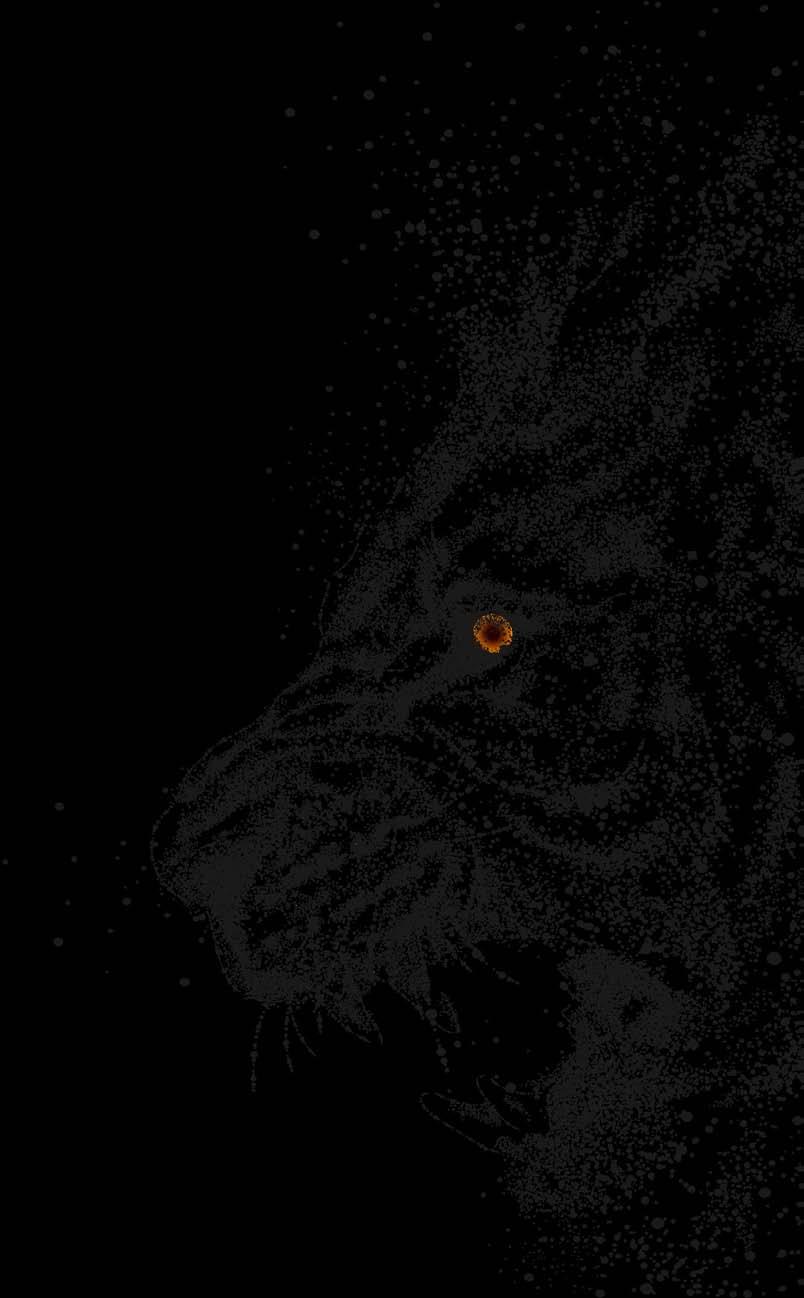OKX BUILDING A GLOBAL CRYPTO EXCHANGE

Market leader OKX is using host of innovative technologies and business practices to make crypto trading accessible to all.




Market leader OKX is using host of innovative technologies and business practices to make crypto trading accessible to all.


Sustainability is now a key focus embedded in digital platforms from the industrial software vendor.
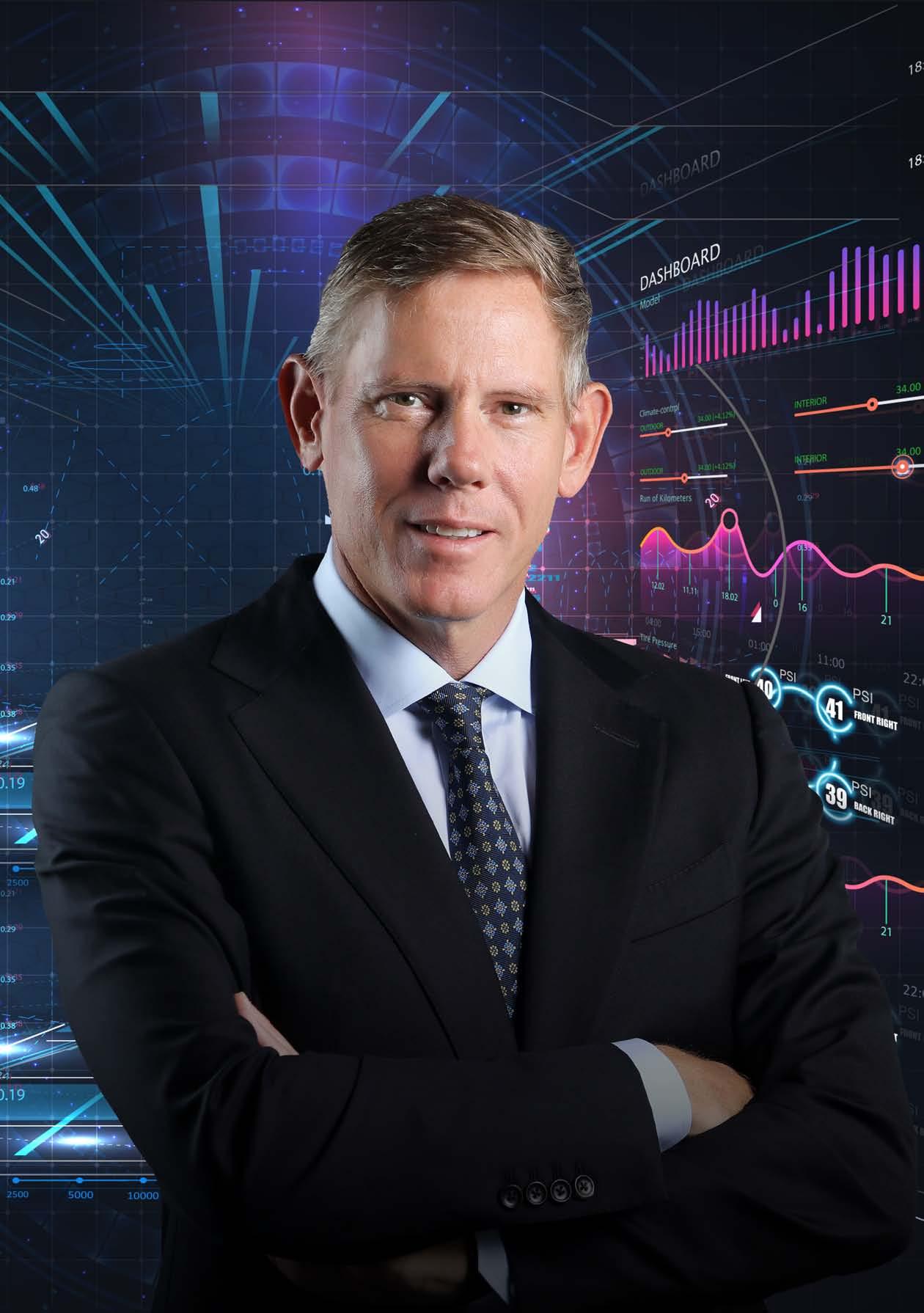



PUBLISHER
Tushar Sahoo tushar@gecmediagroup.com
CHIEF EDITOR
Arun Shankar arun@gecmediagroup.com
CO-FOUNDER & CEO
Ronak Samantaray ronak@gecmediagroup.com
GLOBAL HEAD, CONTENT AND STRATEGIC ALLIANCES
Anushree Dixit anushree@gecmediagroup.com
GROUP SALES HEAD
Richa S richa@gecmediagroup.com
PROJECT LEAD

Gurleen Rooprai gurleen@gecmediagroup.com
Jennefer Lorraine Mendoza jennefer@gecmediagroup.com
SALES AND ADVERTISING
Ronak Samantaray ronak@gecmediagroup.com
Ph: + 971 555 120 490
DIGITAL TEAM
DIGITAL CONTENT LEAD
Deepika Chauhan
IT MANAGER
Vijay Bakshi
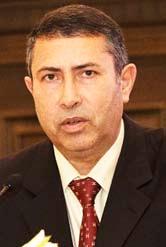
CREATIVE LEAD
Ajay Arya
DESIGNER
Rahul Arya
PRODUCTION, CIRCULATION, SUBSCRIPTIONS info@gecmediagroup.com
The world is heading for a polarised economy and balance of power and control. It is not difficult to see the three sides of control emerge on the global landscape. The conflict in Europe is evidence of this polarised world in motion. The energy crises in Europe is another dimension.
Ongoing pandemic in China impacting manufacturing, supply chain congestion, oscillating market prices, looming recessionary conditions, scaling back to work challenges, are stressing business sentiment. Across all this, citizens and nations are battling the early impacts of climate change.
The oil and gas industry, whose dominant performance indicator till now was consistent and stabilized trading and supply is now adapting to the benefits of digital transformation and the challenges of reducing its carbon footprint and taking responsibility for the emergence of a circular economy.
It is very important to understand, the position of the oil and gas industry is highly strategic on the global landscape. This industry still produces the energy of the world and therefore any positive disruption and transformation of its operations, will have positive impact everywhere. Going forward these changes are expected to contribute as net-positive into the global economy.
According to AVEVA’S Caspar Herzberg, we are in what many refer to as a critical decade, a pivotal time in the fight against climate change but also an opportunity to secure a sustainable and equitable future for all,
UAE Office No #115
First Floor , G2 Building
Dubai Production City
Dubai
United Arab Emirates
Phone : +971 4 564 8684
USA
31 Foxtail Lan, Monmouth Junction NJ 08852, Ph: + 1 732 794 5918
Printed by Al Ghurair Printing & Publishing LLC. Masafi Compound, Satwa, PO Box: 5613, Dubai, UAE
Published by Accent Infomedia MEA FZ-LLC Office No #115
First Floor , G2 Building Dubai Production City
Dubai United Arab Emirates Phone : +971 4 564 8684
A publication licensed by International Media Production Zone, Dubai, UAE
@Copyright 2018 Accent Infomedia. All rights reserved.
While the publishers have made every effort to ensure the accuracy of all information in this magazine, they will not be held responsible for any errors therein.
There is a worldwide shift towards a decarbonised economy. Digitalisation will help refiners handle this energy transition, while reaping the benefits. In order to comply with all the new requirements, refiners need to be capable of reducing carbon intensity immediately and prepare to implement methods that diverge from fossil-based fuels.
As refiners seek solutions to lower carbon emissions and adapt to the changes brought by the ongoing energy transition, they will have to adjust operations, modernise existing process units and design new facilities. All of these will only be possible by being on top of the shift through digitalisation, says Herzberg.
Some benefits of digitisation have already been quantified. AVEVA software can save 15-30% in energy costs and reduce CO2 emissions by 9-15%, cutting downtime by 25%. Furthermore, with AVEVA software, businesses can save up to 15% in total installed cost and up to 30% in design cost, while allowing workers to make smarter feedstock decisions, from 2 days to 2 hours, for improved climate impact and less downtime.
Business Transformation is proud to be a media partner at this year’s annual ADIPEC 2022 and partner to drive this transformation.
Turn these pages for more in our special section on industry transformation.
Wishing the best of positive outcomes for you from the event.
Arun Shankar
arun@gecmediagroup.com
Supported By
31 October - 3 November 2022
Strategically taking place before COP27, ADIPEC is the global platform for leaders to reinforce commitments that will drive the industry towards reducing emissions, meeting decarbonisation goals, and providing a realistic view on short- and long-term energy outlooks.
STRATEGIC CONFERENCE THEMES: CONFERENCES AT ADIPEC:

The long-term impacts of geopolitics on the global economy and energy industry
The road to COP27 and COP28
An industry transitioning: adapting to the new fundamentals of supply, low carbon and new energy solutions
Innovation and the energy transition: pioneering a new era of technology development
The new management agenda: future workforce and the leaders of tomorrow
• Strategic Conference
• Technical Conference
• Decarbonisation Conference NEW
• Offshore & Marine Conference
• Smart Manufacturing Strategic & Technical Conferences
• Forum for Diversity, Equity & Inclusion Conference
• Downstream Technical Conference
View


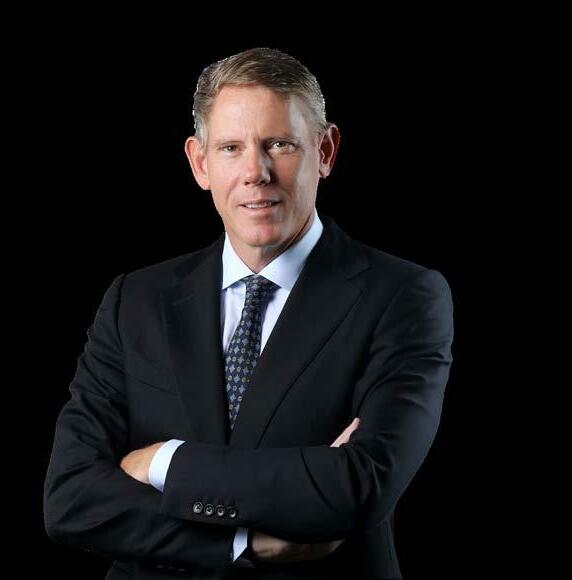
















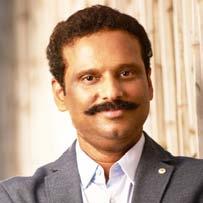
In the experience-driven era, applications that connect users to core systems must roll out rapidly, but complex ones lie outside the expertise of citizen developers.

APPROACH #2
Secondly, the IT team could use a low-code platform to develop the project, liaising tightly with business domain experts to ensure tight control over the project and optimise its integration into the stack while leap-frogging formal requirements gathering.
APPROACH #3
Emerging from the chaos of the pandemic has come a new imperative – that of the employee experience, which called for intuitive, empowering connection to business intelligence and automated workflows for customer-facing activities, as well as multifaceted platforms for collaboration with colleagues.
Each time a program manager encounters a new use case on their digital transformation journey, they consult the map and the plan. The map will have already described the use case. The plan will opt for one of four approaches to building a solution that will satisfy the use case.
The IT team could build it from scratch, retaining full control of the project, the product, and its maintenance. This takes a long time and puts a heavy requirements-gathering burden on the IT department.
A third option is to allow business leads to become citizen developers and build the solution on their own with no IT supervision. However, this option would still require robust governance that would guide citizen developers and ensure they do not create system or information silos. Of course, there is always the fourth and final option, which is the full procurement route.
APPROACH #4
Purchasing a solution from a vendor that has tried-andtested experience of the subject area is appealing to many. But requirements gathering, while shorter in duration than when building a bespoke solution, still creates a delay in rollout. Additionally, this option relinquishes considerable control of the solution, handing it to the vendor. So, for reasons of agility, flexibility, and control, outside procurement is not ideal. Regional IT stakeholders should face the new landscape with a new plan that utilises a mixture
of the first three options for solutions building. Let IT teams focus on core systems. Internal developers, properly equipped with the latest tools and appropriately versed in the innermost workings of the business, are best placed to create and maintain such systems, and this should be their top priority.
But IT teams can also accelerate each individual application project – and hence, the whole digital transformation journey – by using low-code development for complex solutions. In the experiencedriven era, the applications that connect users to core systems must roll out rapidly, but the more complex ones will lie outside the expertise of citizen developers. By using low-code development, coders can not only meet the time demands of business stakeholders, but they will spend less time away from core systems.
And citizen developers come into the picture where simple automated workflows and lightweight apps will suffice. Business users understand the problems they are trying to address. They understand them better than any technology stakeholder ever can. No-code platforms can fulfil these project requirements under appropriate IT governance, assuming the platform supports all-in-one rapid prototyping, development, and deployment. n
There is a reason zero trust is finding its way into best-practice manuals, it is the gold standard of security for IT environments we have been building.

Trust is a hard-won commodity. Businesses want it from consumers. Governments want it from citizens. People want it from peers. But there is one walk of life in which we dial back the trust, where we call loudly for less of it. The cybersecurity industry is currently urging the implementation of zero trust — the perimeterless approach that assumes a breach and treats every process, user, and session as a potential threat.
While this may sound somewhat draconian, zero trust can be implemented in a way that is relatively invisible to users. It may also sound a little like surrender — that security professionals have given up on prevention. But nothing could be further from the truth. Zero trust is merely a recognition of the times in which we live. The common-office environment, an IT term used to describe the technology, consumables, and security that make up a thriving business, has become more digital.
But some organisations are reticent. IBM’s 2022 Cost of a Data Breach Report, which
surveyed 550 organisations worldwide, including 31 in the Middle East, shows that 80% of critical infrastructure organisations have yet to implement zero trust. And the report cited significantly higher average breach costs for such entities compared with those that had zero trust policies in place.
If you are a stakeholder or decision maker in an organisation that has yet to adopt zero trust, let the following be your guide. At this point in history, it is doubtful that you have not moved at least some of your IT to the cloud and also likely that at least some of your employees have worked from home. Zero trust is an identity-centric posture, which is ideal for the world of hybrid work that characterizes the modern commonoffice environment.
To support the always-connected requirements of the hybrid office and the diverse family of endpoints and third-party networks that comprise it, trusted work and workloads must routinely operate outside the traditional office perimeter. The list of now-relegated defense
l 80% of critical infrastructure organisations have yet to implement zero trust.
l Zero trust environments implement closed security models, as opposed to the open models used by OSes.
l A zero trust commonoffice environment will ensure that authentication and authorisation are dynamically provisioned.
l Per-session access, closely monitored and analysed, is safer and allows for termination of processes when anomalies are discovered.
l Between employees’ personal devices, shadow IT, mesh of networks there are too many unknowns.
l Zero trust shrinks attack surfaces and narrows threat windows through broad and granular enforcement of least privilege.
tactics is long — firewalls, intrusion prevention, network segmentation, and wired network security. They still have their uses, but they no longer belong on the front line.
Today’s common-office environment already has a foot in the cloud, which just happens to be the ideal staging area for zero trust. Cloud environments, leveraged properly, can deliver impressive capabilities for the management of devices and identities, no matter where they are operating. And coincidentally, NIST best-practice guidelines on zero trust call for data sources and computing services to be considered resources, no matter where they are operating.
The common-office environment should therefore adopt the Information Technology Infrastructure Library, ITIL framework for asset management that classifies hardware, software, applications, and other technology into appropriate logical groups for the purposes of risk assessment.
Let us consider other NIST guidelines for the modern common-office environment’s adoption of zero trust. All communication, internal and external, should be secured and encrypted and network security standards should not change based on location. All devices should be fully patched and monitored for any anomalous behavior. Access to any system or resource should be granted in full consideration of dynamic risk-based policies and through the highest standards of dynamic authorisation and authentication.
It should be granted only as needed, and expire in a timely fashion, preferably immediately upon termination of a session. And all logs and any other data collected in the environment should be gathered as often

as possible to give optimally accurate information.
Zero trust environments implement closed security models, as opposed to the open models used by most of today’s OSes. A zero trust commonoffice environment will ensure that authentication and authorisation are dynamically provisioned with support from up-to-date contextual data from a variety of sources. Per-session access, closely monitored and analysed, is safer and allows for suspension or termination of processes and sessions when anomalies are discovered.
There is a reason that zero trust is finding its way onto the pages of more and more international best-practice manuals. It is the gold standard of security for the precise IT environments that we have been building recently and are likely to continue to build. Between employees’ personal devices and shadow IT, and the mysterious mesh of networks that make up our cloud services, there are too many unknowns for security teams to implement anything but zero trust.
In the modern commonoffice environment, zero trust shrinks attack surfaces and narrows threat windows through broad and granular enforcement of least privilege. And it significantly reduces the risks from all attack vectors by limiting privileges and access. Just as a drop of oil is easier to spot on a clean floor, cyberthreats tend to stand out more clearly in a sanitised identity-centric digital space. Strangely, but happily, the zero trust common-office environment actually leads to more trust – more trust from the outside world by trusting nothing within. n





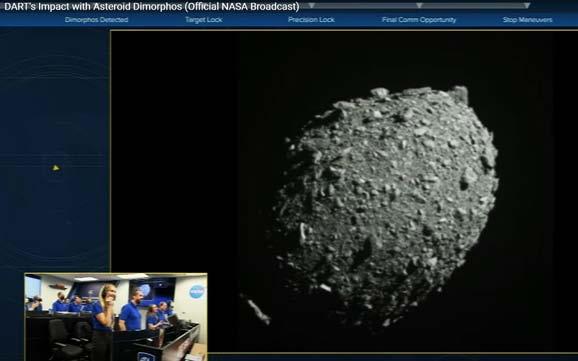

Since 26 September, analysis of data by NASA’s Double Asteroid Redirection Test, DART investigation team shows the spacecraft’s kinetic impact with its target asteroid, Dimorphos, successfully altered the asteroid’s orbit. This marks humanity’s first time purposely changing the motion of a celestial object and the first fullscale demonstration of asteroid deflection technology.
This mission shows that NASA is trying to be ready for whatever the universe throws at us. NASA has proven we are serious as a defender of the planet.
Prior to DART’s impact, it took Dimorphos 11 hours and 55 minutes to orbit its larger parent asteroid, Didymos. Since DART’s intentional collision with Dimorphos, astronomers have been using telescopes on Earth to measure how much that time has changed. Now, the investigation team has confirmed the spacecraft’s impact altered Dimorphos’ orbit around Didymos by 32 minutes, shortening the 11 hour and 55-minute orbit to 11 hours and 23 minutes. This measurement has a margin of uncertainty of approximately plus or minus 2 minutes.
Before its encounter, NASA had defined a minimum successful orbit period change of Dimorphos as change of 73 seconds or more. This early data show DART surpassed this minimum benchmark by more than 25 times.
As new data come in each day, astronomers will be able to better assess whether, and how, a mission like DART could be used in the future to help protect Earth from a collision with an asteroid if we ever discover one headed our way.
AVEVA is sponsoring the Climate Innovation Zone at the 2022 United Nations Climate Change Conference, COP27. AVEVA believes that public-private partnerships are critical to breaking down silos in the development of new low-emission products, as the development of entirely new supply chains requires a wider ecosystem approach that allows for the sharing of collective risks.
AVEVA joined the First Movers Coalition in 2022 to send a powerful market signal on the importance of commercializing zero-carbon technologies more rapidly, making them economically viable in the next 7 years. A public-private partnership launched by the US State Department, through Special Presidential Envoy for Climate John Kerry, and the World Economic Forum, the FMC is a coalition of companies using their purchasing power to create early markets for innovative clean technologies across eight hard to abate sectors.
These in-scope sectors are responsible for 30% of global emissions–a proportion expected to rise to over 50% by mid-century without urgent progress on clean technology innovation.
By 2030, AVEVA will replace at least 5% of its conventional jet fuel demand with sustainable aviation fuels that reduce life-cycle greenhouse gas emissions by 85% or more when compared with conventional jet fuel or zero-carbon emitting propulsion technologies. These targets are set against its FY20 baseline.
AVEVA is looking forward to COP 28 as it will be held in Abu Dhabi next year. The UAE is committed to projects that tackle the challenges posed by climate change. As a strong proponent of sustainability, AVEVA is delighted that UAE has won the bid to host COP28 in 2023. UAE is uniquely placed to build a global consensus around securing a safe and sustainable future for us all.

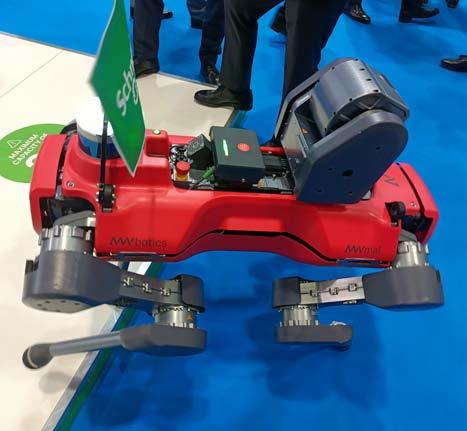
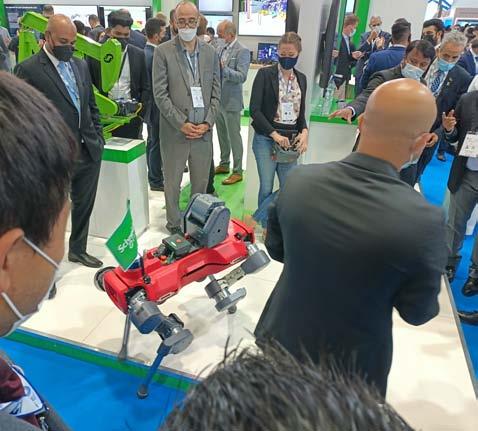

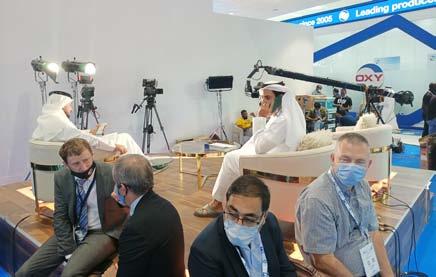

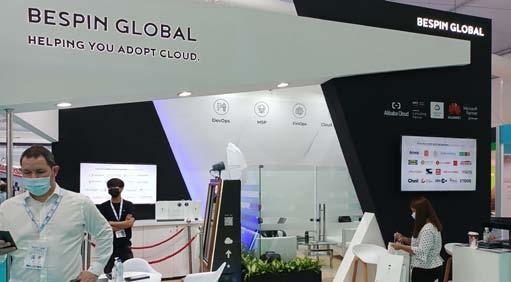
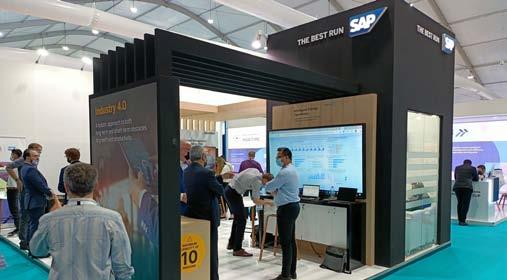
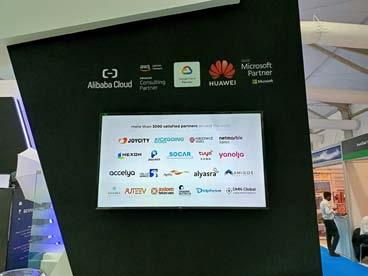
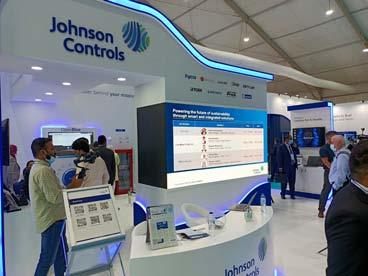
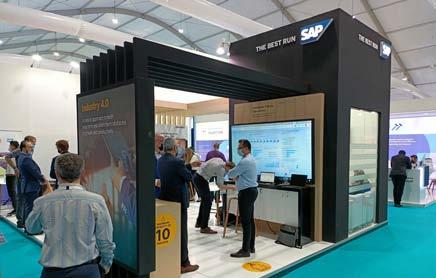
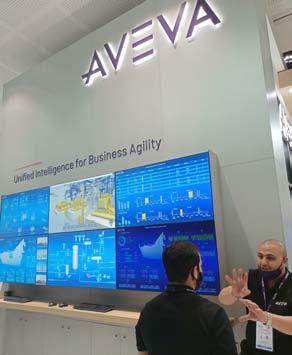
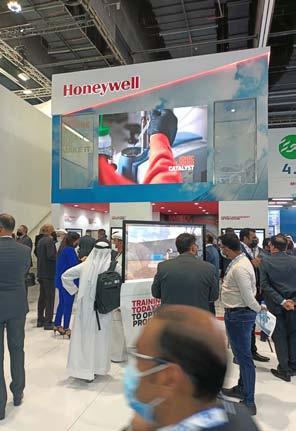
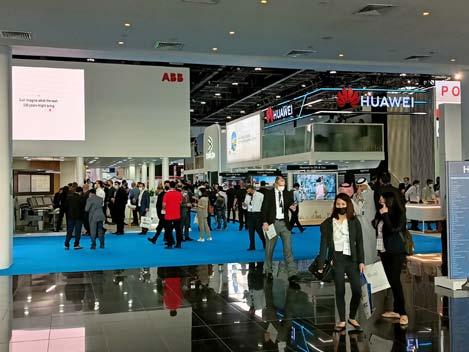
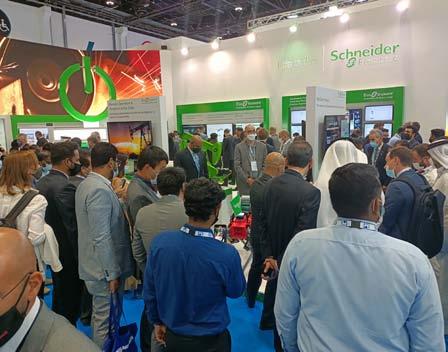
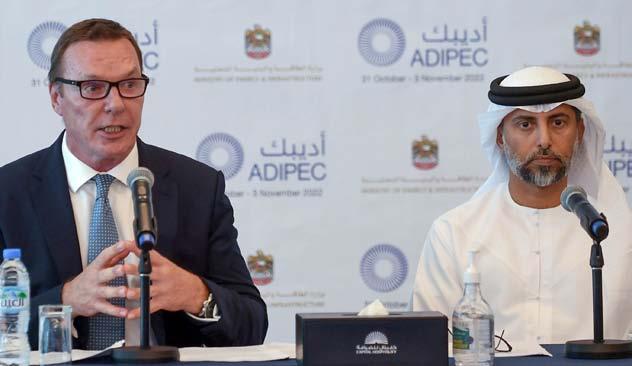
The UAE will be at the heart of the global dialogue on the future of energy, as industry leaders, policy makers and innovators from around the world gather in Abu Dhabi from the 31 October to 3 November for ADIPEC 2022.
Under the newly bestowed patronage of His Highness Sheikh Mohamed bin Zayed Al Nahyan, President of the United Arab Emirates, ADIPEC has evolved to reflect a rapidly changing global energy landscape. The event is taking place at a time of unprecedented complexity in energy market and the global economy, as industry and governments work to achieve energy security and advance climate goals at the same time.
The flagship global energy event will engage in helping answer the industry’s most pressing questions under the theme of The Future of Energy: Secure, Affordable and Sustainable.
The event will highlight the balanced approach needed to advance a successful energy transition: fast-tracking decarbonisation of today’s energy sources, while diversifying into future energies. Taking place the week before COP27 in Egypt, and as the UAE prepares to host COP28, a particular focus will be on how the industry is delivering on climate action, turning net-zero commitments into realised emission reduction.
The conference will also see the United Nations Environment Programme’s UNEP launch An Eye on Methane, the second edition of its International Methane Emissions Observatory IMEO report. The report will outline the progress made to set, track and achieve a reduction of methane emissions, with a particular focus on the oil and gas industry through the Oil and Gas Methane Partnership 2.0.
In addition, OPEC will release its annual World
Oil Outlook report to highlight and further the understanding of the many possible future challenges and opportunities that lie ahead for the oil industry. It will also work to encourage dialogue, cooperation and transparency between OPEC and other stakeholders within the industry.
ADIPEC 2022 will host a series of conferences providing strategic and technical insights, including the ADIPEC 2022 Strategic Conference and hydrogen-focused sessions. More than 1,200 speakers, including over 40 Ministers, CEOs, and policy influencers, will participate in more than 350 sessions.
ADIPEC’s conference programme will focus on five strategic themes:
l The long-term impact of geopolitics on the global economy and energy industry
l The road to COP27 and COP28
l Adapting to the new fundamentals of supply, low-carbon and new energy solutions
l Innovation and the energy transition: pioneering a new era of technology development’
l The new management agenda: future workforce and the leaders of tomorrow
Key strategic speakers include
l His Excellency Dr Sultan Ahmed Al Jaber, Minister of Industry and Advanced Technology, UAE and Managing Director and Group CEO of ADNOC and UAE Minister

l His Excellency Suhail Mohamed Faraj Al Mazrouei, Minister of Energy and Infrastructure
l CEOs of top global energy companies including BP, Oxy, Eni, INPEX, OMV and others will also be among the high-level speakers
His Excellency Suhail Al Mazrouei, UAE Minister of Energy & InfrastructureKanoo Energy, a division of Kanoo Industrial and Energy, will be participating in Abu Dhabi from October 31 to November 3 at ADIPEC 2022. IT will be showcasing a range of sustainable technological innovations that are accelerating the growing demand for energy transition.
Visitors will witness Kanoo
Energy’s collaborative offerings divided in industrial and technology categories. The technology section of the stand will display state-of-the-art technology solutions.
The Kanoo Energy stand will have for the first time a mini theatre setup to display technical presentations by participating partner companies. The sessions
will provide enriching industry insights, challenges, and market disruptions that will be at the heart of the global dialogue on the future of energy. The stand will also amplify the achievements and futuristic direction adopted by Kanoo Energy and its partners via a giant screen.
Established over two decades ago, Kanoo Energy offers engineering products and services. It provides sustainable solutions to the oil and gas, petrochemical, utility and the industrial sector as a whole, through smart engineering and value-added services.
The Yusuf Bin Ahmed Kanoo Group is one of the oldest and largest family-owned independent group of companies with varied interests. Kanoo Energy, a subsidiary, is a leading engineering service provider to core sector industries – Oil and Gas, Power, Utility, Mining, Construction, among others – across Saudi Arabia, UAE, Bahrain and Oman.
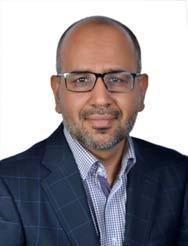
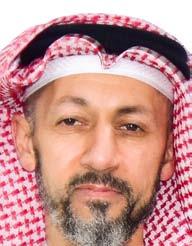
As the energy industry faces a dual challenge – how to meet the growing demand for resources from a growing population with increasing standards of living, while also addressing sustainability goals - digital transformation is recognised as a key contributor to long-term sustainability.
AspenTech will be showcasing its extensive portfolio of solutions that help oil and gas and energy companies accelerate their transition towards more sustainable operations. The company’s digital tools play a vital role in advancing sustainable technology pathways and providing future insights while achieving profitable outcomes.
Antonio Pietri, President, and

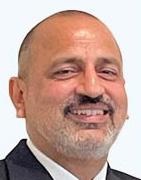
CEO of AspenTech is a speaker at the event. He will participate in ADIPEC’s panel: Leading in the transition: the evolving role of CEOs.
Reducing energy usage and waste, innovative carbon capture solutions including using hydrogen as a new energy source, co-processing with bio-feedstocks in refineries, and promoting a circular economy are just some of the ways AspenTech is helping the industry evolve in today’s challenging new era. Digitalisation will be key because it can deliver increased safety in operations, greater reliability, and improved efficiencies. In combination, these results drive greater sustainability by delivering safer, greener, and faster operations
all while supporting increased profitability.
This year, the goal is to provide a platform for key players to translate net-zero pledges into net-zero plans by stimulating debate on sustainability pathways, to influence COP 27 and 28 conversations, and to demonstrate the role of oil and gas in driving smarter, more sustainable, and reliable energy systems.
AspenTech is a gold sponsor of the event.
Ali Abdulla Kanoo, President of Kanoo Industrial and Energy division, and Deputy Chairman of YBA Kanoo Group. Manoj Kumar Tripathy, Chief Executive Officer, Kanoo Industrial and Energy. Raman Marwaha, General Manager, Kanoo Energy, UAE and Oman.the energy systems of tomorrow, at a strategic panel. The thought-provoking discussion will shine a light on how international oil companies, integrated energy companies and national oil companies NOCs can decarbonise operations and create new partnerships and capabilities to achieve net-zero goals, while producing and delivering energy to meet the world’s growing demands.
AVEVA will showcase its portfolio of industry-leading offerings that empower oil and gas and energy companies to fast track their digital transformation and sustainability journeys.
Digitalisation and sustainability are hot topics in the oil and gas and energy sectors, as companies look to find new efficiencies, better serve customers and decarbonise operations.
AVEVA’s solutions leverage cloud, artificial intelligence AI and digital twin technology combined with human insight to help industries tangibly boost operational delivery and sustainability at every level.
AVEVA’s solutions have already enabled 19 of the world’s top 20 petroleum companies to embrace digital transformation and realise significant business and environmental benefits.
As requirements to remain competitive and deliver value while meeting climate targets pervade the energy sector further, organisations must make a conscious decision to begin their digital transformation journeys and take advantage of data and innovative automation tools to evolve and thrive.
AVEVA CEO Peter Herweck will speak on Delivering the energy needs of today while investing in
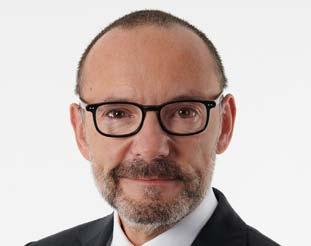
Arvin Singh, Global APM Executive Business Leader, will lead a presentation on integrating realtime optimisations with advanced process control for optimum energy management and optimisations.
Michele Cacciari, Global Oil and Gas Segment Lead will discuss how digital technologies can help companies overcome decarbonisation challenges.
Joachim Boese, Industry Principle for Oil and Gas, will lead a presentation about an integrated approach, driving towards optimum operational excellence and sustainability.

AVEVA will host a number of live demonstrations at its booth to help customers learn about the latest digital technologies that can enable them to improve capital project sustainability, increase process energy efficiency, uncover profitable pathways to netzero, improve asset reliability and connect assets, process, and people using digital twin.

Global software and engineering vendor Emerson will be exhibiting at ADIPEC 2022 with the theme, Innovation that Accelerates Sustainability. Emerson will showcase the advanced automation technologies that are helping today’s energy industry execute capital projects and achieve operational excellence while reducing emissions and optimising energy use.
In alignment with ADIPEC’s vision for digitalisation in the sector, Emerson’s innovative solutions have been developed for operators to facilitate the transition to cleaner energy sources, promote decarbonisation, and implement actionable strategies to navigate their sustainability journeys. Solutions presented will focus on four key focus areas: Energy Efficiency, Emissions Reduction, Operational Excellence and Decarbonisation. As the industry navigates the path to net-zero, there is increasing focus on energy use, emissions reduction and operational excellence. Emerson is committed to helping our customers achieve the highest levels of efficiency and sustainability based on goals set by policymakers and governments.
Peter Herweck, CEO AVEVA. Evgeny Fedotov, Senior Vice President and Head EMEA, AVEVA.Fugro, a global geo-data specialist, will be showcasing its ground-breaking remote and autonomous solutions that will help the energy sector reduce carbon emissions and enable safer, more cost-efficient offshore operations.
Visitors to Fugro’s stand will get to step inside a Remote Operations Centre and see the region’s first Uncrewed Surface Vessel, USV operated live from the stand. Fugro celebrated the arrival of the region’s first-ever class-built USV, in September shortly after the unveiling of their new offices in UAE.
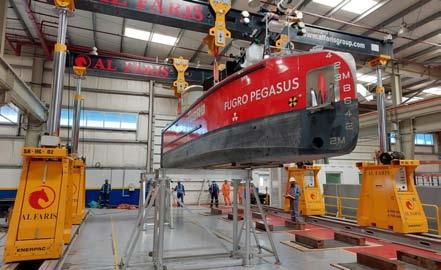
With the significant rise in robotic technology, AI analytics and big data modelling, remote and autonomous solutions are at the forefront of
the transformation and will enable faster data processing, and data delivery, leading to quicker and more efficient decision-making.
Throughout the event, Fugro experts will be available to share insights on net-zero vessels, real-time data delivery portals, touchless subsea vision technologies, and high-speed hydrography solutions.
Remote and autonomous technology now plays an essential role in delivering cleaner, safer and more cost-efficient solutions. Fugro provides solutions by adopting an integrated approach that incorporates acquisition and analysis of geo-data and related advice.
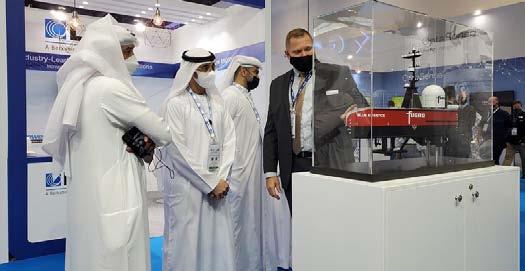
Kelvin, a collaborative control software company delivering industrial intelligence, will be showcasing solutions such as Kelvin Carbon Maps and Kelvin Copilots that demonstrate how Kelvin converges industrial automation and human understanding to convert insights into actions that reduce carbon emissions.
Peter Harding, Founder and CEO of Kelvin will be a part of an executive panel at the Decarbonisation Conference on day one of the event. Kelvin will also be presenting at the Innovation session on Achieving Net-zero Goals with Industrial Intelligence.

The region is focused on the next generation of sustainability initiatives to help advance and
develop its economies. The digital revolution is taking place in the energy markets right now. Kelvin is charting a new path for energy companies to achieve their sustainability goals.
Kelvin Carbon Maps is a solution that connects vital data and information about production facilities, assets, and processes to engineers and operators. It provides teams with complete visualisation in a unified view of their entire operations in real-time. It identifies bottlenecks, addresses failures, and provides the information required to act and improve operations.
The company will also present Kelvin Copilots, a solution that enables organisations to fix problems and act through
optimised applications that improve production processes, provide prescriptive recommendations, and execute control decisions. Kelvin Copilots transform ideas about improving production into actions that achieve real impact on net-zero goals.
Kelvin is focused on connecting companies to the Next Generation of Industrial Automation for carbon reduction and collaborative control.


The beauty of crypto is that it is unbiased and permissionless
LENNIX LAI Director of Financial Markets, OKX.
To support trading for majority of tokens and NFTs, OKX is expanding the team of engineers who focus on interoperability of different blockchains.
OKX is a global provider of products and services for investing in and trading digital assets. OKX is the second largest crypto exchange by volume, offering retail and institutional customers spot, futures, margin, options, and perpetual swaps trading. Additionally, OKX’s product suite includes Earn, a tool for growing digital assets through staking and DeFi; a Web3 Wallet for self-custodying assets; an NFT marketplace; and more.
The core purpose of blockchain-based transactions and other crypto innovations is to address problems with the classical financial system, such as high costs, entry barriers, and data vulnerability. Blockchain is not necessarily a speed solution, but it is one of the most efficient and secure technologies for global transactions
and easy accessibility for anyone on the planet.
“The beauty of crypto is that it is unbiased and permissionless,” says Lennix Lai, Director of Financial Markets, OKX.
In terms of speed, scalability solutions are being introduced as an additional technology layer to optimise blockchain-based transactions, such as the Lightning Network for Bitcoin and Polygon for Ethereum. Both Lightning and Polygon are Layer 2 technologies that are used to increase speed and volume of transactions without compromising blockchain’s core purpose.
In order to provide a one-stop web3 experience and support trading for a majority of tokens and NFTs, OKX has built and continues to expand our team of world-class blockchain engineers. The team focuses on developing
My vision for the metaverse is that it should be a digital representation of the real world, but more open, borderless and free. With the evolution of technologies like AR, VR, AI and web3, we are going to be establishing another economic system that operates in parallel with the real-world economy. Regardless of all this, an open economy still needs a globalised asset transfer system.
Blockchain is the best technology we have for making asset transfers within the metaverse economically feasible. Exchanges are going to be an important part of this. They are going to serve as the gateway between the metaverse and the real-world economy.


“Exchanges are the gateway between metaverse and real-world economy”
the most comprehensive suite of digital asset instruments, and to create a seamless user experience. “This requires us to focus heavily on interoperability of different blockchains,” says Lai.
“We also need to double down on our risk engine, margining system, and liquidation algorithms, all of which our engineers built from scratch,” he adds. Crypto’s degree of innovation means there is no existing playbook to reference.
OKX is striving to eliminate financial barriers, helping to evolve the global economy, and change the world for the better. OKX is at the forefront of innovation and creating a user experience that makes web3 trading and investing, available to everyone. Crypto regulation is complex and varies significantly by jurisdiction. OKX is committed to cooperating with regulators and protecting its users in a range of ways, one of which is by providing educational resources on the products and services we offer.
“Crypto, and bitcoin specifically, is the native money of the internet,” points out Lai. “We can expect to see
crypto increasingly intertwined in the metaverse as a form of payment within gaming, content creation, AR-VR experiences, and other digitally native ways,” he adds. Similarly, NFTs will continue to emerge as proof of ownership in the digital world and within decentralised applications, dApps, which are an important part of the metaverse. OKX’s dApp discovery feature is a great place to explore different use cases for both crypto and NFTs in the metaverse.
The UAE has a high concentration of crypto natives and sophisticated traders. In addition, the UAE regulatory framework is sound, with the framework having sufficient flexibility to allow players to evolve along with the industry. OKX believes crypto regulation should be focused on user protection and antimoney laundering, yet the ability to engage in a constructive dialogue is also crucial.
As one of the most powerful exchanges with very robust trading tools, OKX wants to galvanise this constituency and support responsible trading behaviours. n
l Scalability solutions are being introduced as an additional technology layer to optimise blockchain-based transactions.
l Lightning and Polygon are Layer 2 technologies that are used to increase speed and volume of transactions.
l The core purpose of blockchain-based transactions is to address problems with the classical financial system.
l Blockchain is not a speed solution, but it is one of the most secure technologies for global transactions.
l The team focuses on developing the most comprehensive suite of digital asset instruments
l This requires focus on interoperability of different blockchains.
l Crypto’s degree of innovation means there is no existing playbook to reference.
l OKX is at the forefront and creating a user experience that makes web3 trading and investing, available to everyone.

l Crypto regulation is complex and varies significantly by jurisdiction.
l OKX is committed to cooperating with regulators and protecting its users.
l NFTs will continue to emerge as proof of ownership in the digital world and within decentralised applications.

• UAE has a high concentration of crypto natives and sophisticated traders.
• UAE regulatory framework is sound with the framework having sufficient flexibility.
• Crypto regulation should be focused on user protection and anti-money laundering.

• Metaverse should be a digital representation of the real world but more open.
• An open economy still needs a globalised asset transfer system.
• Blockchain is the best technology we have for making asset transfers within the metaverse economically feasible.
• Exchanges are going to serve as the gateway between metaverse and real-world economy.

In light of Cybersecurity Awareness Month, can you tell us more about the state of the regional cybersecurity landscape and how are organizations faring on this front?
With the move to hybrid working environments, as well as rapid digital transformation, the threat landscape has expanded, and cybercriminals have become even more sophisticated, affecting businesses on several fronts. Cybersecurity has also struggled to gain significant support from business leaders, often not until it’s too late. More recently though, cybersecurity maturity is appearing in business RFPs, and with a highly connected digital supply chain, the expectation is that organizations will not become threat vectors to business partners.
There has also been a reprioritizing of risks for CIOs in the aftermath post-pandemic. GBM’s annual cybersecurity report released earlier this year
highlighted how redesigning security for the digital-first world and protecting it from external and internal threats has become a key priority for organizations. According to the report, Data Security, Cloud Security and Secure Remote Access and Connectivity, are top of mind when Gulf organizations choose to invest in security.
How is GBM helping regional organizations in their cybersecurity journeys?
GBM’s comprehensive framework of services and solutions, integrating technologies from global security leaders, has enabled organizations to implement industry best practices in cybersecurity. With a holistic approach to mitigating security risk, GBM’s expertise focuses on the people, processes, and technology within an organization.
With massive leaps in the
region’s digital transformation and increased adoption of technologies such as cloud and Artificial Intelligence (AI), we are seeing increased sophistication in cyber threats and a wider impact on an organization’s operations. In response to this, GBM Shield was created as our most comprehensive cybersecurity offering to date, marking a new chapter in cyber defense for the region.
Can you tell us more about the recently launched GBM Shield cybersecurity program?
GBM Shield brings together the best of GBM’s advanced cybersecurity portfolio and its three decades of experience to offer an integrated program that is vendor-agnostic and can be easily scaled up or down based on the needs of the customer.
GBM had recently announced the acquisition of majority shares of Coordinates Middle East, a regional Managed Detection & Response firm headquartered in Dubai. GBM Shield will be powered by Cor., Coordinates’ innovative platform that enables integration, automation, and orchestration across any technology to provide defensegrade services to enterprises of all sizes.
Developed to address evolving security challenges that regional organizations face due to the sophisticated threat landscape, the program is risk-driven rather than technology-driven, thus enhancing existing technologies within an organization to elevate its security and cyber resiliency and increase the returns on security investment. GBM Shield cyber defense program taps into GBM’s extensive experience and local know-how, while also providing 24/7 access to GBM’s uniquely skilled team of security professionals. n
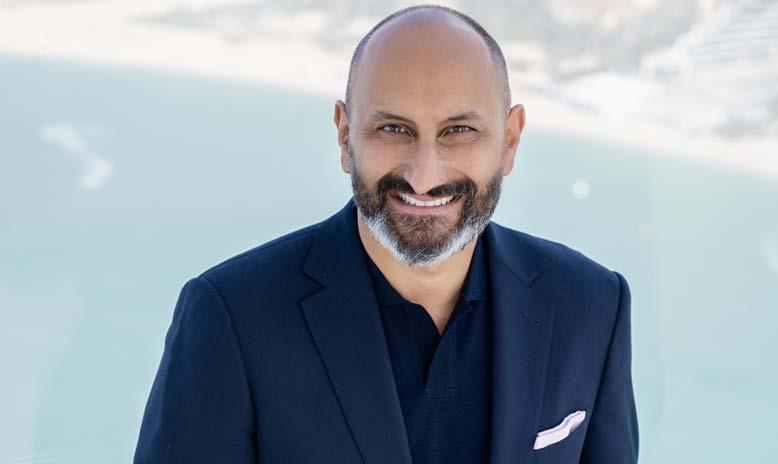
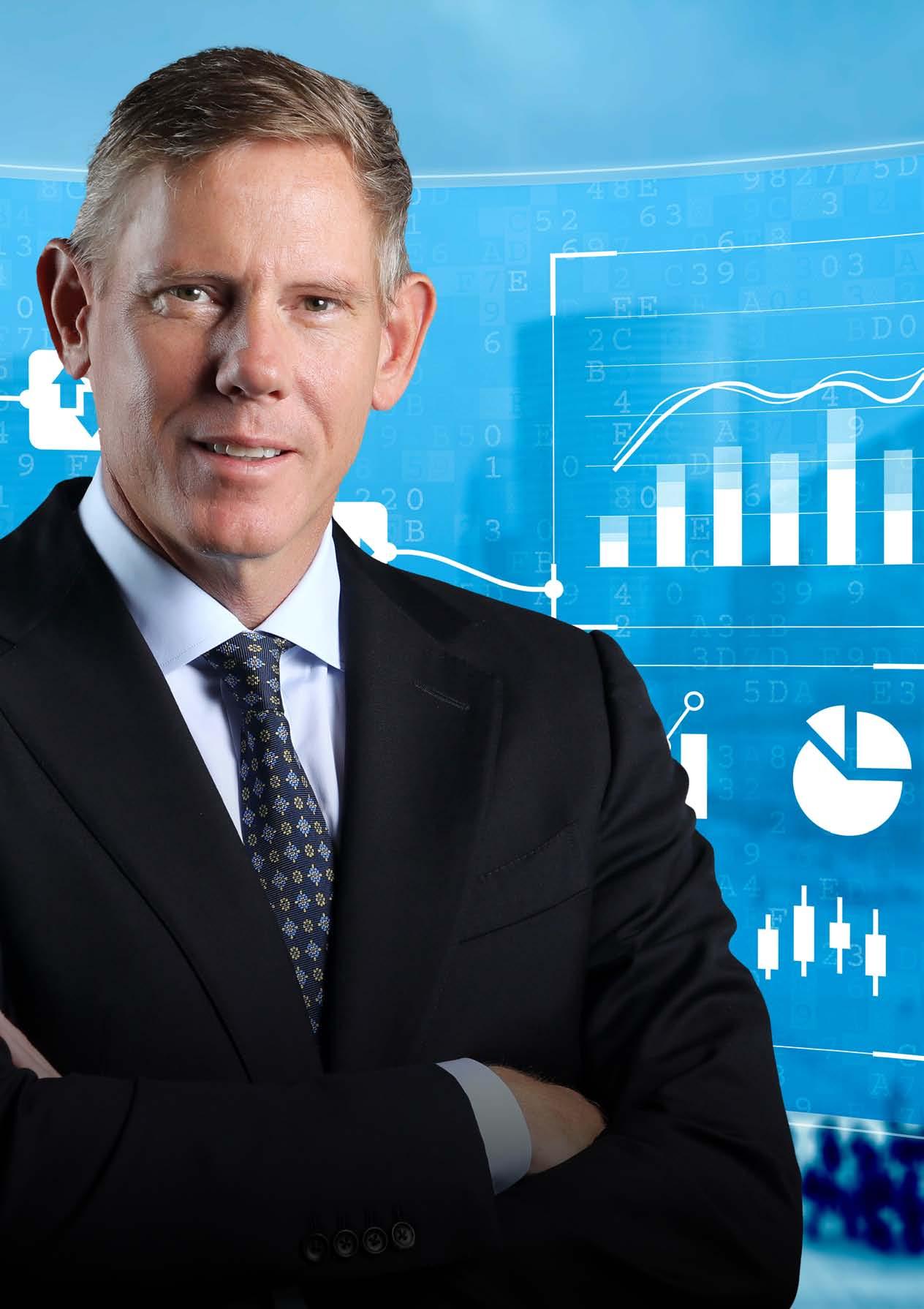
The performance of the oil and gas industry is dependent on the economic cycle and oil supply, and for now, oil demand is still expected to grow over the next few decades. With the energy transition underway and the current global happenings, however, it is likely that as the economy recovers, industries might not go back to relying primarily on oil.
Currently, oil and diesel are still major players in the market, but this demand is diminishing with a growing awareness of, and action towards, climate change. Renewable energy sources are gathering momentum with a global push towards sustainability and digital transformation. Embracing cleaner fuels over fossil-based systems of energy production and consumption is made increasingly easier for companies as the costs of renewables drop.
“There is a worldwide shift towards a decarbonised economy. Digitalisation will help refiners handle this energy transition, while reaping the benefits. In order to comply with all

the new requirements, refiners need to be capable of reducing carbon intensity immediately and prepare to implement methods that diverge from fossil-based fuels,” says Caspar Herzberg, COO, AVEVA.
As refiners seek solutions to lower carbon emissions and adapt to the changes brought by the ongoing energy transition, they will have to adjust operations, modernise existing process units and design new facilities. All of these will only be possible by being on top of the shift through digitalisation.
“Refiners need to face two big challenges today,” continues Herzberg. The first challenge is to act immediately on current operations minimising carbon emission and ensuring safe operations. Digital technology can be used to optimise operations reducing emissions to the minimum level possible, while preserving safety conditions of the plant.
Digitalisation can also predict equipment behaviour anomalies with machine learning and AI, and train operators via the cloud so they will
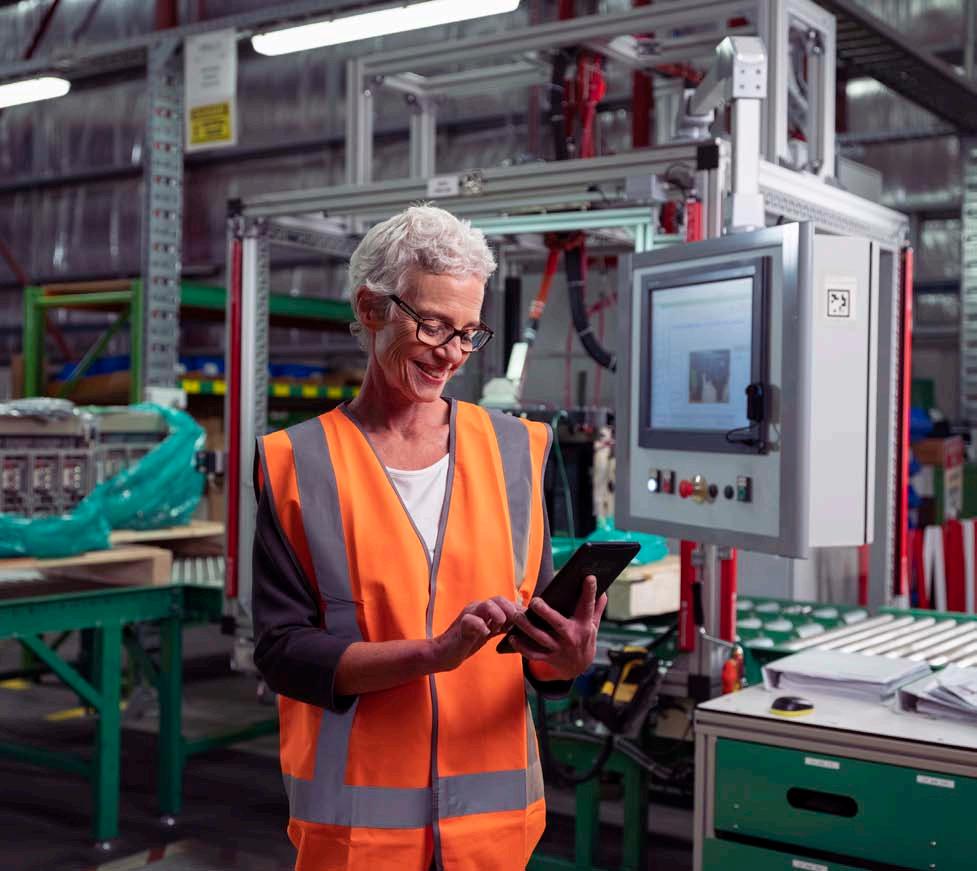
be ready to identify the risk of an accident and act in time to prevent it.
The second challenge is to ensure they can reach the netzero condition by 2050 and energy transition will play a critical role here. Several studies are already in place to develop new processes with renewable feedstock.

The digitalisation of the engineering cycles is crucial to speed up new developments through higher engineering data reliability, and collaboration among different teams. If properly applied, the right digital tools and work approach will enable innovation and creativity to develop new process that will be at the same time green and profitable.
One of the fastest and simplest ways that refiners can adopt to increase profitability and sustain resources is through early detection of equipment failure and process behaviour changes. By reducing unscheduled downtime, productivity stays consistent, and with consistency, the workforce is more efficient, and profits are gained.
“Digital transformation is rapidly becoming the foundation for the next-normal in the oil and gas
l Digitalisation of engineering cycles is crucial to speed up new developments through higher engineering data reliability.
l The right digital tools will enable innovation to develop new processes that will be at the same time green and profitable.
l Digital transformation is rapidly becoming the foundation for the nextnormal in the oil and gas sector.
l Cloud services are in need right now and AVEVA is working across customers to use this technology.
l We are in what many refer to as a critical decade – a pivotal time in the fight against climate change.
l It is also an opportunity to secure a sustainable and equitable future for all.
l It is important for companies to chart out and expand their ESG agendas.
l Goals should be trackable so a company can act if it sees it is not on the path to achieving its goals.

Companies should look to shape ESG strategies based on feedback from stakeholders
There is a worldwide shift towards a decarbonised economy. Digitalisation will help refiners handle this energy transition, while reaping the benefits. In order to comply with all the new requirements, refiners need to be capable of reducing carbon intensity immediately and prepare to implement methods that diverge from fossilbased fuels.
The digitalisation of the engineering cycles is crucial to speed up new developments through higher engineering data reliability, and collaboration among different teams. If properly applied, the right digital tools and work approach will enable innovation and creativity to develop new process that will be at the same time green and profitable.
As refiners seek solutions to lower carbon emissions and adapt to the changes brought by the ongoing energy transition, they will have to adjust operations, modernise existing process units and design new facilities. All of these will only be possible by being on top of the shift through digitalisation.
One of the fastest and simplest ways that refiners can adopt to increase profitability and sustain resources is through early detection of equipment failure and process behaviour changes. By reducing unscheduled downtime, productivity stays consistent, and with consistency, the workforce is more efficient, and profits are gained.
AVEVA has a history in using its engineering capabilities to help customers in oil and gas to modernise existing facilities to adapt current processes for more sustainable operations. This data centric approach combined with simulation capabilities allow customers to evaluate hundreds of scenarios and design new plants much faster than before.
By shortening the engineering cycles and exploring the libraries for sustainability, like the features for hydrogen production, oil and gas companies can make significant advancements in their journey towards a net-zero operations.
AVEVA software can save 15-30% in energy costs and reduce CO2 emissions by 9-15%, cutting downtime by 25%. Furthermore, with AVEVA software, businesses can save up to 15% in total installed cost and up to 30% in design cost, while allowing workers to make smarter feedstock decisions, from 2 days to 2 hours, for improved climate impact and less downtime.
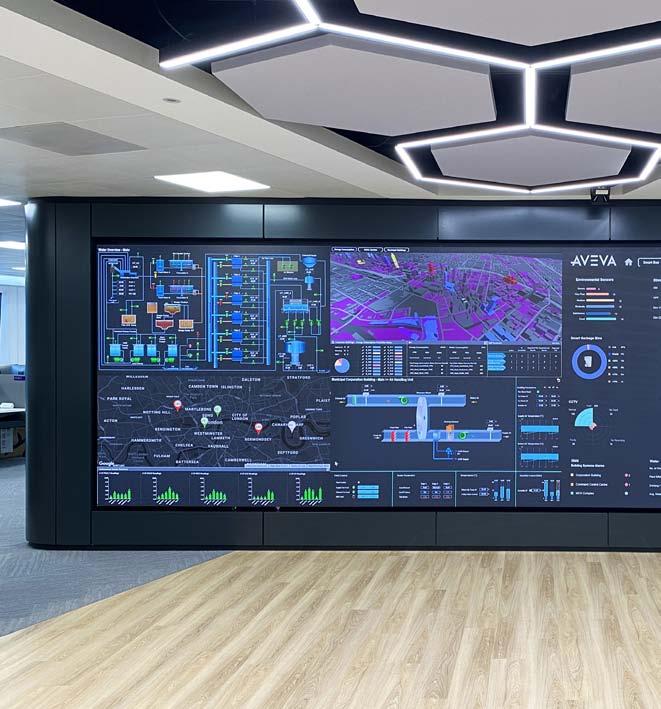
sector. Cloud services are in critical need right now, and AVEVA is working across customers to expedite their use of this technology,” says Herzberg.
New technologies such as Artificial Intelligence present four key areas to alleviate business and operational risk, improve safety and efficiency within the workforce, and deliver a more reliable and secure enterprise.
“We call this the four Ps: Predictive, Performance, Prescriptive and Prognostic,” points out Herzberg. AVEVA’s products equips oil and gas companies with the technology to flourish under the wave of digital transformation.
An environmental, social and governance, ESG strategy in actuality is a business model that outlines social responsibility within an organisation and beyond. A full-fledged ESG strategy comprises significant focus on environmental care, a responsibility to people outside the organisation and adhering to best business practices.
Energy companies are large enterprises with multiple stakeholders, so it is advisable that they create or expand their ESG strategies based on feedback from stakeholders, and by conducting thorough materiality assessments and setting trackable goals. They should also go back and reassess their ESG efforts over time so they can achieve new levels of success.

Petroliam Nasional Berhad, PETRONAS, Malaysia’s fully integrated oil and gas multinational company, produces 2.4M barrels of oil equivalent per day.
With the commitment to achieve net-zero carbon emissions by 2050, PETRONAS recognised the importance of plant stability to achieve its sustainability goals. Its engineering division, which was keen to optimise equipment performance to improve plant reliability and reduce downtime, turned to AVEVA’s asset performance management solutions.
The engineering division at PETRONAS was keen to optimise the performance of their equipment to improve plant reliability and reduce downtime. They turned to AVEVA’s cloud-based asset performance management solutions, resulting in savings of $17.4M and 14x ROI in the first year.
Out of 51 warnings, 12 were identified as high-impact warnings. Acting on these and preventing them in advance of actual failure reduced unplanned downtime. One notable incident amongst many was an instrumentation fault which was identified on time, leading to a catch in a liquid separator that saved PETRONAS $222,000 in potential asset failure and wasted material. Moreover, many of the catches helped in reducing critical rotating equipment failure, boosting improved reliability through proactive asset monitoring and maintenance.
Following this success, PETRONAS is expanding the deployment of AVEVA Predictive Analytics, implementing an additional 10 plants with a total of 150 equipment trains. The AI-based models combined with an easy-to-implement tool allow O&G companies to roll out in scale, boosting the benefits across multiple sites
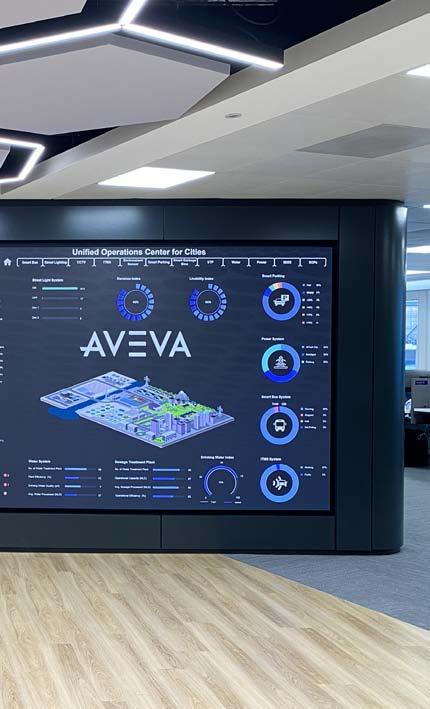
While there may be initial upfront costs, over time a well thought out ESG strategy and focus on sustainability will actually help a company thrive, and achieve its business and financial objectives. Moreover, as governments seek to reach peak emissions in the next few years and introduce legislation to decarbonise their economies to stave off climate change in line with the Paris Agreements, sustainable operations will become a necessity.
In addition, while organisations exist to provide products and services and make money, today’s investors and stakeholders are increasingly keen on businesses that make the effort to make the world a better place. So, again, businesses will gradually be challenged to evolve and adopt ESG strategies that incorporate sustainable objectives and operations.
“We are in what many refer to as a critical decade – a pivotal time in the fight against climate change but
it is also an opportunity to secure a sustainable and equitable future for all,” feels Herzberg.
It is therefore important for companies to chart out and expand their ESG agendas, with a significant focus on sustainability by achieving net zero, as well gender equality, so they attract the best talent and realise better business performance. These goals, whatever they maybe, should be trackable so a company can act if it sees it is not on the path to achieving its goals.
Companies should look to shape their ESG strategies based on feedback from stakeholders, by conducting a materiality assessment and studying its results with a view to outline trackable goals. In addition, companies can also look to the United Nations Sustainable Development Goals, which actually serve as a unifying blueprint for governments and corporations to drive sustainable development. n
Meeting the needs of growing population while reaching net-zero goals requires companies to achieve operational excellence, agility, flexibility, insight.
Digital technologies are critical to the oil and gas, energy industry, particularly as firms adapt to a VUCA volatility, uncertainty, complexity, and ambiguity environment which promises to be the norm, not the exception.
Already, refineries around the world have begun to turn to tools like digital twins, digital simulation, and AI-powered predictive maintenance to optimise assets and improve sustainability. Going forward, digital technologies will play a key role in decarbonisation efforts, helping integrate low-carbon energy sources into

operations and allowing companies to balance energy sources while identifying efficiencies across their operations.
The next three decades represent a critical time for the oil and gas, energy industry. By 2050, demand for energy will grow by 50%; electricity generation will need to grow by 75%, 90% of which is expected to come from renewable sources. At the same time, the global population is expected to grow by approximately 2 billion, millions of whom will make up a rapidly growing middle class.
Meeting the needs of that growing population
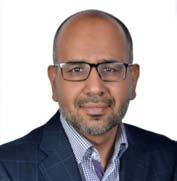 Vice President and Head MEA, AspenTech.
Vice President and Head MEA, AspenTech.
while reaching net-zero carbon goals requires companies to achieve new levels of operational excellence, agility, flexibility, and insight that can only be delivered by digital technologies.
Digital technologies are critical to ensuring the oil and gas, energy industry can meet netzero targets by the middle of this century. They also deliver significant returns across the entire asset lifecycle, enabled by reductions in technology costs, improved sensors that allow for expanded data collection and a changing workforce, many of whom are already familiar with digital technology.
Technologies capable of monitoring, collecting, exchanging, and analysing data from those devices will be essential going forward, helping drive sustainability solutions like carbon capture, emissions reductions, bio-based feedstock, hydrogen economy. Embedding those tools into software that is easy to use and can improve workflows will be critical to unlocking a sustainable future.
l Refineries around the world have begun to turn to tools like digital twins, digital simulation, AI-powered predictive maintenance to optimise assets.
l Digital technologies will play a key role in decarbonisation efforts, helping integrate low-carbon energy sources into operations.
l The next three decades represent a critical time for the oil and gas, energy industry.
l By 2050, demand for energy will grow by 50%; electricity generation will need to grow by 75%, 90% of which is expected to come from renewable sources.
l Global population is expected to grow by approximately 2 billion, millions of whom will make up a rapidly growing middle class.
For example, a Middle Eastern refiner saw dramatic ROI improvement – including up to a 25% increase in throughput, as much as a 30% decrease in maintenance costs, and a 20% increase in asset lifecycle – from investments in digital technology.
The process and manufacturing industries are today generating more than 200 times more data than they were just 30 years ago, and new Industry 4.0 technologies, like machine learning, AI, cloud computing, and more, are leveraging that data to disrupt traditional business models.
If companies hope to stay at the forefront of those changes, they will need to ramp up new organisational capabilities, including in areas like OT, IT and data science combined with domain experience, to empower a new generation of technical workers. Training will also play an important role in ensuring staff can work with digital solutions across product lifecycles.
The use of advanced technologies – like digital twins, simulation technology,

and AI-powered predictive maintenance – has increased in recent years, and the number of connected devices is expected to reach 30 billion in the next five years.
AspenTech provides a range of innovative products and solutions that help customers in capital-intensive industries achieve operational excellence as they work to address the dual challenge of meeting the increasing demand for resources and higher standards of living from a growing population while also attaining sustainability goals.
These solutions serve as critical tools for companies working to achieve resource efficiencies, whether they are working to reduce energy usage and waste, exploring technologies like carbon capture to navigate the energy transition, considering the use of new energy sources like hydrogen or co-processing with bio feedstocks in refineries. n
Securing your network by segmenting it into several smaller subnetworks is necessary to stop attackers from gaining control of the entire infrastructure.
Digital transformation is introducing new risks for the Middle East’s oil and gas sector, making segmentation essential to stopping attackers from gaining control of critical cyber physical systems
As businesses continue to digitally transform, a trend that was already underway but that accelerated due to the disruption of the pandemic, cybersecurity has been brought to a new level of importance and complexity. Many companies have adopted hybrid infrastructures, requiring remote access and increased connectivity to keep things running. This has broadened the attack surface they must protect.
This new world of connectivity requires particular attention from businesses with cyber physical systems. These were traditionally physically isolated from the general IT network, air gapped is the term used, but today, if the wealth of data from Industrial IoT, IIoT and Operational Technology, OT systems is to be harnessed, such an approach is no longer
feasible.
On one hand, bridging the connectivity gap is essential as it paves the way for rich data analytics that enhance operations. But on the other, they pave the way for cyberattacks such as ransomware and malware to spread laterally through networks, wreaking havoc not only on IT systems, but on all parts of a company’s vital infrastructure. Fortunately, there is an answer to enhancing network security even as connectivity increases: network segmentation. Connecting IT and OT networks without this approach is analogous to having a house with sophisticated locks on its front door, but no locks on any internal doors, drawers, cupboards, or safes. While it’s true that most criminals would struggle to pick the front entrance’s locks, the few that succeed will gain full access to everything of value inside.
The same is true for an unsegmented OT network: Once cybercriminals gain entry, they can access and seize everything within. Securing your network by
segmenting it into several smaller subnetworks is necessary to stop attackers from gaining control of the entire infrastructure.
Cyberattacks such as NotPetya and WannaCry have shown how damaging attacks that target the OT side of business infrastructure can be. And they demonstrate the vulnerability of unsegmented networks. Attacks on OT networks hurt more than just reputations and finances, they can cause real physical damage to machinery.
Because OT controls and monitors physical devices and infrastructure, damage to OT networks has tangible and dangerous repercussions –especially when these systems are responsible for processing highly volatile petrochemicals. Network segmentation helps avoid these repercussions.
So how can Middle East oil and gas companies efficiently segment their OT networks? While it’s slightly more complicated to segment an OT network than an IT network, it must be a priority. You can separate your OT network from the IT by placing a
demilitarised zone in between.
Oil and gas companies can gain multiple benefits by keeping different parts of their OT network isolated from one another through network segmentation. The most significant of these is the ability to slow down attackers that are attempting to infiltrate the network. Cybercriminals who gain access to a zone in a segmented network have a harder time getting at the rest of the network, and they will be easier to pinpoint and stop in their tracks.
l Connecting IT and OT networks is analogous to having a house with sophisticated locks on its front door, but no locks on any internal doors.
l Most criminals would struggle to pick the front entrance’s locks, the few that succeed will gain full access to everything of value inside.
l Cyberattacks such as NotPetya and WannaCry have shown how damaging attacks that target the OT side of business infrastructure can be.

l Cyberattacks such as NotPetya and WannaCry demonstrate the vulnerability of unsegmented networks.
l Attacks on OT networks hurt more than just reputations and finances, they can cause real physical damage to machinery.
If they do manage to cause damage with an attack, that damage will be contained, with less time and money required to deal with the aftermath. Additionally, the overall security of data is strengthened because the separation between zones reduces the risk of data theft or destruction.
Another key benefit of network segmentation is the ability to grant secure remote access. Remote access is a fundamental part of the operations of a typical oil and gas company – required by everyone from an organisation’s own employees to external service partners and machine manufacturers connecting for remote maintenance and troubleshooting.
In OT environments, remote management is the top threat vector, making it absolutely essential that companies utilise a cybersecurity solution that enables them to grant secure remote access to eliminate attacks on remotely managed systems and machinery.
Firewalls allow users to easily grant secure, temporary VPN access to different parts of the network as needed. Reducing

One of the best ways to approach OT network segmentation is to create zones within the OT network and deploy internal firewalls between them, limiting movement. Segmenting functions into separate zones, such as separating, for example, the manufacturing execution system MES, the human machine interface HMI, and the programmable logic controller PLC, helps to restrict network traffic between the zones to a minimum and prevent malicious activities. Creating separate network security zones within the individual layers of the OT network, which is often referred to as micro-segmentation, provides additional protection and isolates devices from each other. Lateral movement and the spread of malicious software within the network become impossible. Moreover, this makes it easier to detect and fix threats.
the attack surface as much as possible, Zero Trust Network Access solutions can provide conditional access to specific applications only.
As oil and gas firms turn to digital technologies to enhance efficiencies, network segmentation becomes as crucial to their OT systems as it is for traditional IT networks. We have seen what can happen to an unsegmented network when it is breached. To avoid the devastating impact of modern ransomware attacks and network breaches, it is critical for Middle East petrochemical companies to implement network segmentation today. n
The oil and gas industry has been acting to accelerate diversity programmes across organisations to ensure they compete for the best talent.
The future of work is upon us: across industries, organisations are evolving to attract, retain and develop a new generation of future leaders into their workforce. The pandemic and a strong global commitment towards sustainability and decarbonisation have acted as catalysts that are transforming organisational makeup all over the world.
The oil and gas industry has also been acting earnestly to accelerate diversity, equity and inclusion programmes across their organisations to ensure they compete for the best talent and create sustainable future businesses. While these initiatives are not new, progress has been slower than expected, with several barriers to success that need to be addressed.
There are several problem areas that need to be addressed around diversity and equity in the workplace, especially in the oil and gas industry. Firstly, a smaller proportion of women choose STEM programmes as they look at graduate and postgraduate education – Women make up as much as 54% of postsecondary students, but only 27% of them choose a STEM Science, Technology, Engineering, and Mathematics programme.
Secondly, the appeal of the oil and gas industry as a talent destination has been steadily declining – a decade ago the industry was the 14th most attractive employer, but today it stands as the 35th most attractive option according to a study across 40 industrial sectors for STEM students.
The net result is there is a declining talent pool for entrylevel positions. Organisations need to step up in their initiatives to promote both STEM education and the oil and gas industry as career choices, and partnerships with local communities and academia are now more critical than ever. Another problem is the talent pipeline, and how it is being managed across the organisation at all levels. While women occupy as much as 35% of entry-level positions across the industry, these numbers shrink as we climb higher on the corporate ladder, reducing to as little as 10% as we reach executive leadership.
This is due to two main reasons – firstly, far fewer women get their first promotion from individual roles into entry-level management. This is known as the Broken Rung Problem, and it creates an imbalance that only gets worse as we progress on the corporate ladder.
The lack of promotions
at entry-level increases the likelihood that women get ignored or overlooked for middle-level management and senior roles, and the organisational makeup progressively gets skewed towards men in the workplace creating a cycle that is difficult to break.
A likely reason for this is unconscious bias – it has been observed that women having high-performance levels often get passed up or overlooked for promotions and bigger opportunities. Furthermore, there are often expectations that employees need to take up diverse assignments to progress to bigger roles. In combination, this means that the industry loses a lot of women talent early in their careers.
Organisations need to be cognizant of this perception as a staller, work on ways to weed out bias, and improve first-level promotions for women to improve their chances of success as their careers move forward.
Another hurdle often seen is the progression from middle and higher management into executive positions: According to McKinsey – as we move from Vice President to Senior Vice President roles and above, the proportion of women represented in the industry declines as much as 38%, almost

twice as much when compared to other STEM companies and other industries.
Again, here the broken rung problem at the entrylevel manifests into the Hollow Middle problem – the organisation has not developed enough female middle management to consider for more senior assignments. This is compounded by another interesting aspect –women are more likely to hold functional responsibilities, which are readily transferrable to other industries, and during periods of industry disruption, a lot of female talent moves over to other industries from the oil and gas sector. In a nutshell, at this level in the organisation, there is a very small talent pool available for promotion into an executive role.
l A smaller proportion of women choose STEM programmes as they look at graduate and post-graduate education.
l Women make up as much as 54% of post-secondary students, but only 27% of them choose a STEM programme.
l The appeal of the oil and gas industry as a talent destination has been steadily declining.
l A decade ago the industry was the 14th most attractive employer, but today it stands as the 35th most attractive option.
l Net result is there is declining talent pool for entry-level positions.

l Organisations need to step up their initiatives to promote STEM education and oil and gas industry as career choices.
A meaningful approach to this would need not only a rigorous focus on development, training and mentorship, but also a robust talent acquisition strategy that looks at bringing over external talent that might currently be in other industries.
Emerson MEA has a strong emphasis on strategic partnerships across industry, academia, and youth to support our future talent needs. In 2020, Emerson recruited over 31 engineering students from 11 nationalities as part of their collaborative internship programme with the Rochester Institute of Technology RIT Dubai. More recently, Emerson signed an MoU with Abu Dhabi Polytechnic in February 2022 to support their STEM students through learning programmes. This year Emerson also kickstarted the UAE National Graduate Programme, which is designed as a rigorous two-year rotational programme, that is designed to propel Emerson’s
It has been observed that women having high-performance levels often get passed up or overlooked for promotions and bigger opportunities. Furthermore, there are often expectations that employees need to take up diverse assignments to progress to bigger roles. In combination, this means that the industry loses a lot of women talent early in their careers.
Organisations need to be cognizant of this perception as a staller, work on ways to weed out bias, and improve first-level promotions for women to improve their chances of success as their careers move forward.
Organisations need to step up in their initiatives to promote both STEM education and the oil and gas industry as career choices, and partnerships with local communities and academia are now more critical than ever.
objectives around Emiratisation and local talent.
To conclude there has been good progress in diversity and inclusion initiatives in the oil and gas industry, but there is room for improvement. There must be a conscious effort to improve the perception of the industry as a home for talent, and more women need to be encouraged to take up STEM as a field of study – for leading companies in this space partnerships with youth, academia and institutions are of critical importance.
Secondly, there must be a strong focus on talent development that supports organisational objectives around the promotion of women and the proportion of composition change. Finally – diversity, equity and inclusion initiatives must go hand in hand with cultural change that fosters collaboration and inclusivity to create a sustainable organisation for the future. n
Automatic tracking of assets is likely to become next big thing in the next few years as integration with other systems will help to analyse assets.
Forescout offers a safe and reliable cybersecurity platform for the oil, gas and energy industry to help organisations manage security and operational risks of any type of device – IT, IoT and OT – that’s connected across their digital terrain.

Unlike other offerings in the market, Forescout provides more than just visibility and threat detection. Considering the industrial context, Forescout enables organisations to automate workflows and respond to new risks with segmentation and integrations into existing security tools to remain safe, secure, and compliant even as the threat landscape changes. Forescout offers services to complement the analysis and maintenance of the solution.
Digitalisation is helping organisations gain more insights into their operations to reduce operating
costs, improve precision, quality, as well as health and safety issues. Being able to remotely control operations and exchange information with other sites not only improves work environments and enables more mobility for employees, but it also allows oil, gas and energy organisations to invest in new business models and create new value. Digital business transformation can be a real competitive advantage.
While digitalisation is great, with it brings new risks. Operational technology devices are not built with security in mind, as demonstrated by findings in our recent report, OT:ICEFALL, which uncovered a set of 56 vulnerabilities affecting devices from 10 OT vendors. The products affected by the findings are known to be prevalent in industries such as oil and gas, and power generation and distribution.

This creates a new challenge, as attackers are increasingly looking to exploit these vulnerabilities and the growing interconnectivity and interdependency of IT and OT systems, and the potential societal impact makes this industry a target.
The industry needs to recognise that investing in digital solutions including extra cybersecurity, is added value and focus on gains as a result. When you really take the time to look at how much wasted time your staff spends on fixing issues and troubleshooting, it’s easy to see just how much wasted capital has been spent on paying workers to do tasks that could be easily solved by implementing the right digital solution.
As the industry continues to innovate and improve its processes and implement cybersecurity best practices, any roles that prioritise data and learn from what it shows us will be extremely valuable to the industry. Two best practices the industry can start implementing to manage cybersecurity threats is real-time asset management and continuous risk assessment.
l By monitoring all assets connected to a digital terrain, organisations can ensure they know their risks and strengthen their security posture.
l While digitalisation is great, it brings new risks. Operational technology devices are not built with security in mind.
l A recent report uncovered 56 vulnerabilities affecting devices from 10 OT vendors.
l The products affected by the findings are known to be prevalent in industries such as oil and gas, and power generation and distribution.
l Individuals with cybersecurity backgrounds that understand OT will be in high demand.
l Organisations will look for workers that can understand the unique requirements of securing OT.

Operational efficiency is gained when organisations recognise the values and benefits that come with the solution’s implementation, such as asset management, diagnostics support, troubleshooting and reduced downtime. OT security officers will become more critical in the oil, gas and energy industry as it continues to evolve. Individuals with cybersecurity backgrounds that also understand OT will be in high demand as organisations look for workers that can understand the unique requirements of securing OT.
As the oil, gas and energy industry continues to innovate and improve its processes and implement cybersecurity best practices, any roles that prioritise data and learn from what it shows us will be extremely valuable to the industry.
Automatic tracking of asset management is likely to become the next big thing in the oil, gas and energy industry in the next few years. This will be a result of the need for asset management to become digitalised and integrated
with other systems to analyse and manage the assets.
Furthermore, the increasing number of work from home jobs, such as processes that used to be done in factories moving to remote control, will accelerate the need for asset and network access monitoring to continuously monitor the risks and detect new threats.
Two of the best practices the oil, gas and energy industry can start implementing in the coming years to manage cybersecurity threats is realtime asset management and continuous risk assessment. By continuously monitoring and assessing all assets connected to their digital terrain, organisations can ensure they know their risks and strengthen their security posture proactively. This allows them to identify and prioritise needed actions and remediate right away, before a cyberthreat, network or operational issues leads to costly downtime. n
Technology has allowed the industry to collect data, faster and more accurately than before, enabling clients to make better decisions and drive excellence.
Fugro provides support for oil and gas energy projects from the initial site investigation, through project development, operations, and decommissioning, enabling clients to maximise safe and sustainable operations. Through integrated data acquisition, analysis and advice, Fugro is able to support clients in mitigating risks during the design, construction and operation of their assets, both on land and at sea.
Fugro contributes to a safe and liveable world by delivering solutions in support of the energy transition, sustainable infrastructure and climate change adaptation.
The biggest gain for the industry has to be the improvement in communication technology and the introduction of remote operations. Fugro has moved from blurry video calls to virtual vessel tours using remote goggles, allowing experts to physically see what is happening offshore from an office.
Remote operations are allowing companies like Fugro to reduce the risk associated with having people offshore. Technology has allowed the industry to collect data, faster and more accurately than ever before, enabling clients to make better decisions and drive operational excellence.
Even though digital and business transformation is part of daily lives, it comes with its own set of challenges, both internal and external. With geo-data being the pillar of this industry, the sheer volume of data collected, and the safekeeping thereof requires new approaches to enable its assimilation, storage and visualisation.
Externally in the Middle Eastern region, there are cybersecurity concerns, and geopolitical challenges. Then there is also a people element to the challenges the industry faces. Some people have wealth of knowledge and years of experience and could play an important role in propelling the industry further, but they struggle to embrace change.
The best way to measure the ROI is to look at the loss a business will suffer if it does not move with the times. Embracing digital efficiencies like remote and autonomous technology does not only give you a competitive advantage but plays a large role in the sustainability and profitability of a business. Investing in technology is a direct investment in the future, and it always pays off even if it is difficult to measure in the beginning.
A great example can be Fugro’s remote operations. When the company started with the remote and autonomous solutions, Fugro knew there is great value for the project and cost benefits. Now, after 350, 000 hours of remote operations, Fugro can save up to 95% on fuel, reduce project time and eliminate the health, safety and environmental impact of offshore operations.
The biggest business transformation that the maritime industry is currently facing has to be the introduction of remote and autonomous technology,
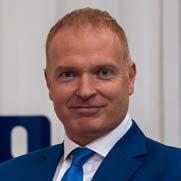
which is rapidly changing the requirements of the workforce. Potentially the best question to answer here is not which jobs, but where?
l Digital twinning is not new to the industry, but its use will significantly increase over the coming years.
l It will become the standard to have a working model of the asset enabling scenario planning, digitised maintenance support and upgrade.
l Automation of ports and oil and gas field activities will require sophisticated communication systems to ensure interaction between ship and shore personnel.
l Vessels that are not autonomous will grow to be a challenge as they will be exposed to the volatility of the human factor.
l The best way to measure ROI is to look at the loss a business will suffer if it does not move with the times.

New technology enables greater diversity and inclusion for workforce migrated from the offshore environment into remote and autonomous control centres. New positions are continuously emerging, requiring alternate skillsets to traditional roles. In essence, the industry is encouraging employees to become experts in system operations and diagnostics by asking them to manage these smart systems. Digital twinning is not new to the industry, but its use will significantly increase over the coming years as will the quality and interactive realism to enable viewing the full ecosystem of assets. It will become the standard to have a working model of the asset enabling scenario planning, advanced digitised maintenance support and upgrade, expanded decision making.
Continued digitalisation and automation of ports and oil and gas field activities will require sophisticated communication systems to ensure seamless interaction between ship and shore personnel. If Fugro are to achieve this fully automated marine system of working, vessels that are not autonomous will grow to be a challenge as they will be exposed to the volatility of the human factor. For a geo-data company like Fugro, securing data is the heart of its business. To ensure Fugro safeguards the masses of data collected, Fugro continuously reviews and seta higher standards for internal protocols. Fugro also works closely with clients to match their cyber security requirements. The USV
The biggest business transformation that the maritime industry is currently facing has to be the introduction of remote and autonomous technology, which is rapidly changing the requirements of the workforce. Potentially the best question to answer here is not which jobs, but where?
After 350,000 hours of remote operations, Fugro can save up to 95% on fuel, reduce project time and eliminate the health, safety and environmental impact of offshore operations.
The biggest gain for the industry has to be the improvement in communication technology and the introduction of remote operations. Fugro has moved from blurry video calls to virtual vessel tours using remote goggles, allowing experts to physically see what is happening offshore from an office. Remote operations are allowing companies like Fugro to reduce the risk associated with having people offshore.
technology was designed with common everyday elements such as password security, limited access to systems, firewalls and so on.
To take things to the next level Fugro had to think outside the box. For example, Fugro has implemented in-house antispoofing technology SATGUARD which ensures that a system uses only legitimate signals. Fugro have also designed the infrastructure to be a system of systems, that contains a breach and protects the network.
Adopting digital transformation has streamlined operations, improved production with predictive analytics, reduced project delays and cost overruns.
Business and digital transformation within the oil, gas and energy industry has created new avenues to increase efficiency, safety, sustainability, and business growth. Currently, the oil and gas, and energy industries rely on solutions provided by the innovations surrounding Industry 4.0 technologies, such as IoT, big data, augmented reality, and cybersecurity. Asset integrity and maintenance, field development and drilling are key areas that have benefitted from digital and business transformational solutions.
Adopting these digital transformations have allowed companies to streamline their operations, and improve production and accessibility with predictive analytics, maintenance, reduced project delays, and cost overruns. There has also been improvement in training programs, transformative strategies, resources, and risk and document management.
Another important aspect is that the sector companies now have a 360-degree view of customers allowing them to manage their demand side effectively, maintain and manage their supply and distribution network by monitoring their assets performance. Utility sector
companies are able to meet the guaranteed standards set by the regulators and the governments. With a massive digital footprint, companies are able to meet the customer satisfaction requirement, manage the revenue collection process effectively and also achieve their operational and strategic KPIs.
With the inclusion of new technological process, there is limited knowledge within the overall organisational team that leads to pushbacks. Some organisations lack digital training or talent or have digital skills shortage to see the transformation project through from start to end or assimilate new technologies with existing frameworks.
There has been a slow integration of newer digital solutions in oil and gas compared to other industries, which could lead to unstructured data that is not ready to be used with the new systems. Furthermore, in an industry driven by ROI, some fail to understand how digital transformative solutions improve returns and add value to the company’s outcome.
Utilities need a lot of control and management as they are asset heavy and maintenance heavy organisations. Having proper, organised, and structured data is the key to optimising overrunning
costs, which is often a challenge. The process of identifying true return on investment and constructing a robust, data-driven business case can be challenging. Unfortunately, the intricacies of the manufacturing industry, along with IIoT and AR’s soft ROI, make it difficult to quantify the direct value of industry 4.0. However, the best way to measure and improve digital transformation ROI is to begin by identifying the problem digital transformation will solve followed by determining investment metrics. As a basis for comparison, it is also useful to set a time frame.
In addition to this, calculating realistic ROI requires evaluating technologies carefully and constructing an ROI model in advance. Utilities industry companies are asset and maintenance heavy organisations, they need to invest a lot of money into asset planning, maintenance, and replacements. To calculate the ROI is always a challenge, having proper, organised, and structured data is the key.
Digital and business transformation is taking over industries globally and causing disruptions in businesses. In the coming years, there will be a greater need for individuals and teams that specialise in cybersecurity, automation and robotics, data science, blockchain development, and artificial intelligence. New
technical skills are also part of the must-have skillset within this industry, so being technology-adept, multiskilled and flexible would be advantageous.
ESG, Environmental and Social Governance is another important area where the utilities industry companies will be forced to focus a lot on in the near future. Many companies will apply ESG related frameworks to improve their ESG footprint.

It is important to collect the right data through HHUs, IoTs and then structure and analyse the data to produce the right metrics that will help to calculate the ROI.
l Currently, the oil and gas, and energy industries rely on solutions provided by the innovations surrounding Industry 4.0 technologies.
l With the inclusion of new technological process, there is limited knowledge within the overall organisational team that leads to pushbacks.
l Some organisations lack digital training or talent or have digital skills shortage to see the transformation project through.
l There has been a slow integration of newer digital solutions in oil and gas compared to other industries, which could lead to unstructured data that is not ready to be used with the new systems.

l In an industry driven by ROI, some fail to understand how digital transformative solutions improve returns and add value to the company’s outcome.
Organisations must optimise their digital infrastructure and deploy an effective cybersecurity strategy to mitigate the threats and risks they may face. This would include setting up an internal team to assess the risks and examine internal and external threats and prevent cybersecurity occurrences. Establishing a 24x7 monitoring solution will prove to be useful. Reactive measures need to be taken to be prepared for any risks that might occur.
The team will need to assess and evaluate the risks at every step of the way. Programs to reduce the gaps in awareness and communication within the organisation would also need to be in place to align the team with the procedures set up. This can help ensure that every team part of the supply chain is secure and are educated on what to do in case of a cybersecurity breach.
Most threats in the utilities industry are from the area of IT-OT integrations. The threat usually being intrusion into the OT Distribution Management Systems network causes disruptions to supply and distribution. This needs to be ring-fenced and well protected. External API Gateway solutions as part of Enterprise Service Bus security must be strengthened to stop all kinds of intrusions. Injazat has implemented
Integrations are very important to plug the data from the various data sources to a data warehouse or a data lake that will help achieve the mentioned goals.
IT-OT integrations using leading robust integration technology platforms will become the mainstream to collect and ingest the data from OT network into IT systems and building a powerful data lake, data marts and data analysis.
Asset Performance Management including Asset Planning, Asset Performance, Asset Replacement, Reliability Centred maintenance, will be another key area to dominate the industry since the utility industry companies are asset heavy. Companies will also apply RCM III standards and framework to improve in this area.
a number of systems and customised many functions to meet the needs of business and processes for clients in utilities industry. In energy, electricity and water companies, Injazat has built, customised, maintained and upgraded systems for Customer Care and Billing, Enterprise Performance Management, IT-OT Integrations, External Entities Integrations, Data Exchange Hub, Reporting Dashboards, and other e-service platforms.
In addition to this, Injazat also provides energy and utilities customers with supplier selfservices including vendor registration, eBidding, eInvoice, eWorkOrder, TAMM services, Customer Mobile Apps, Employee Mobile Apps, integrations with municipalities for utilities and connection business. n
Kelvin unites engineering expertise with AI and offers an action layer enabling customers to save time and achieve sustainability goals.
Kelvin simplifies the process of unifying and analysing information to enable better control decisions. Creating that bridge between Operating Technology and Information Technology is where Kelvin exists. The company empowers engineers to increase their impact through its action layer, which transforms engineering insights into control decisions.
Kelvin unites engineering expertise with AI in a new control software solution. Kelvin is the action layer enabling customers to save time and achieve sustainability goals.
The company delivers in days not months, an integrated view of assets and processes to help find problems, tools for understanding why processes fail, and AI-powered co-pilots that convert insights into action to help predict and prevent issues that lead to emissions.
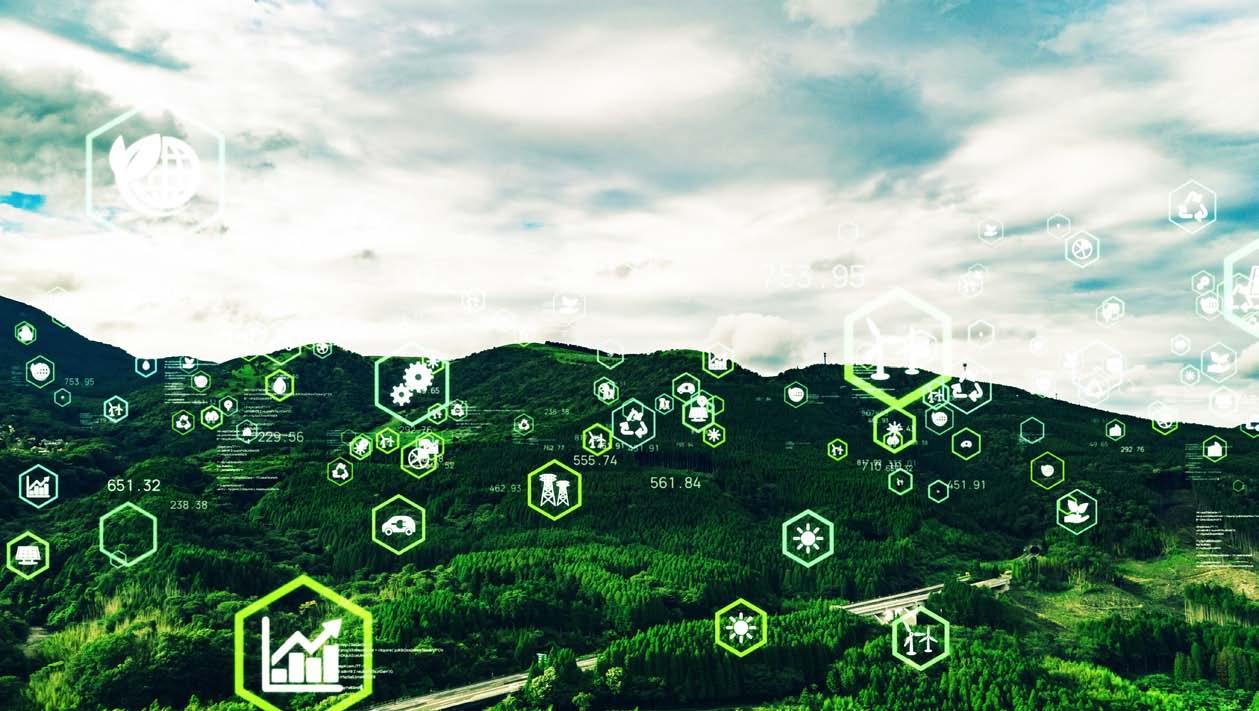
The number one problem is that there are not enough engineers with the right skills to manage this transformation. It is hard to find these people externally, and existing team members already have full-time jobs. This makes prioritising transformation difficult without the right internal champions within the organisation. In addition, success takes too long to achieve.
Kelvin has tried to address these challenges by making it easy for engineers to use its software and demonstrate results. Transformation can be tiresome, so Kelvin has focused on delivering speed to value. Kelvin is built by engineers, for engineers to save time and achieve impact.
Huge engineering and massive capital investments are prerequisites for generating power or finding, extracting, processing, and distributing petrochemicals. This is not the case for digital and business transformation efforts.
Founder and CEO, Kelvin.

Delivering ROI is a core competency. Kelvin integrates in days, not months. The company boosts efficiency and production almost immediately by empowering engineers. It unifies engineering expertise and data science to deliver real results.
Kelvin is an expert at delivering real solutions to real problems with its unique blend of AI and control software. That is how the company consistently achieves 3X Roi across its customer base.
l Kelvin simplifies the process of unifying and analysing information to enable better control decisions.
l Kelvin unites engineering expertise with AI in a new control software solution.
l Kelvin is the action layer enabling customers to save time and achieve sustainability goals.
l The company delivers an integrated view of assets and processes to help find problems, why processes fail, and AI-powered co-pilots.
l The number one problem is that there are not enough engineers with the right skills to manage transformation.
l It is hard to find these people externally, and existing team members already have fulltime jobs.
l Prioritising transformation is difficult without the right internal champions within the organisation.

In the coming years, we will see an increase in data engineering roles within the energy industry. Organising data into usable formats will become increasingly important as more information becomes available. This will enable the process, production, and other engineers to utilise the available information better, making the organisation’s engineering experts far more valuable with relevant data in a usable format.
Engineering experts can then focus on diagnosing problems and finding solutions. There will be a rise in application development tools to take these solutions and deliver them at scale. This is what Kelvin enables through its Co-pilots, which capture engineering insights and convert them into control decisions.
The industry needs better collaboration tools. There are too many silos and too many spreadsheets in this industry today, which needs to change. When information is shared easily, more problems can be solved together. This is why Kelvin built Collaboration Control software.
Kelvin helps bring engineers together to find problems, so that they can fix problems. When the company does that well, then it can leverage new cloud and edge technologies to scale
Kelvin has tried to address these challenges by making it easy for engineers to use its software and demonstrate results. Transformation can be tiresome, so Kelvin has focused on delivering speed to value. Kelvin is built by engineers, for engineers to save time and achieve impact.
Kelvin received the CSA STAR Level 1 Accreditation under the Cloud security alliance and the Cloud control matrix, which includes the Security, Trust, Assurance, and Risk STAR Registry. This public registry documents cloud offerings that provide security and privacy controls. Kelvin consistently achieves 3X Roi across its customer base.
better decision making across its operations. This is what is needed to achieve profitability and sustainability goals.
The cybersecurity sector has a famous mantra: you cannot defend what you cannot see. Visualising operating technology security is crucial in managing cybersecurity threats. Kelvin’s solutions, by design, see OT at the asset and process levels, and deliver operational insights with Security Operation Centre protocols.
Kelvin is committed to delivering speed to value with customers that trust the company. Kelvin received the CSA STAR Level 1 Accreditation under the Cloud security alliance and the Cloud control matrix, which includes the Security, Trust, Assurance, and Risk STAR Registry. This public registry documents cloud offerings that provide security and privacy controls. n
The solutions developed by Petrofac include Petrolytics, Taurus, BuildME, Connected Construction, Connected Worker, Petrofac Go, amongst others.
Petrofac started its digital journey in 2018, and the initial focus was internal digitalisation opportunities and digital optimisation programmes to improve efficiency and productivity. Drawing on this experience, Petrofac went on to develop several solutions for the wider energy industry, which many clients have implemented.
These solutions include: Petrolytics, an AIpowered predictive maintenance tool; Taurus, a risk management platform used in well engineering; BuildME, an asset consultancy solution; Connected Construction, a safety platform for construction projects; Connected Worker, a digital link between onsite personnel and subject matter experts; and Petrofac Go, a mobilisation app for offshore and onsite personnel.
One of the key opportunities is digital twin technology, which Petrofac has adopted along with most clients and many vendors.
A digital twin, in its broadest sense, is the digital representation of a real-world asset, which
enables you to access real-time data and perform predictive analytics and simulations. As the sector becomes more familiar with the technology, Petrofac expects it to be increasingly integrated into workflows across the entire asset lifecycle.
Operations teams will have real-time data, upto-date visibility of the condition and performance of the asset, and the ability to make adjustments remotely. Another big opportunity is predictive analytics, which is being deployed by many energy companies, either through an in-house solution, or an existing technology like Petrolytics.
The industry has to contend with a huge legacy footprint, mainly due to the extensive use of operational technology. The digitalisation of this legacy technology is a key challenge and, represents an industry-specific issue. Other challenges include data quality, which is a prerequisite for predictive analytics, and cybersecurity, especially when you are required to combine more interconnected legacy systems.
Another key challenge is cultural. With the emergence of digital technology, the industry
Petrofacneeds to change the way it has operated for decades and requires today’s professionals to combine domain knowledge with digital understanding - a combination of skills that can be hard to find.
To measure the ROI of digital investments, Petrofac takes an unusual approach. Petrofac categorises investments in one of three ways: digital optimisation where Petrofac re-designs an existing process; digitalisation where Petrofac improves an existing process to make it more efficient; and digital transformation where Petrofac build new capabilities for clients and generates incremental revenues for Petrofac.
Petrofac categorises investments in one of three ways: digital optimisation where Petrofac re-designs an existing process; digitalisation where Petrofac improves an existing process to make it more efficient; and digital transformation where Petrofac build new capabilities for clients and generates incremental revenues for Petrofac.
l The industry has to contend with a huge legacy footprint, mainly due to the extensive use of operational technology.
l Digitalisation of legacy technology is a key challenge and, represents an industryspecific issue.
l Another challenge is data quality, which is a prerequisite for predictive analytics.

l With the emergence of digital technology, the industry needs to change the way it has operated for decades.
l It requires today’s professionals to combine domain knowledge with digital understanding.
l Digital skill sets need to be complemented by domain knowledge and it is at the intersection of the two where the real value is created.
This categorisation helps us evaluate the ROI. Also, by looking at a given function like engineering or procurement Petrofac can judge the value created by multiple digital investments for that function. But Petrofac is also keen to take a holistic view for example, considering improvements in sustainability, efficiency, assurance, and competitive differentiation. The important thing is to look at the ROI comprehensively and not in pockets.
Digital skill sets need to be complemented by domain knowledge. It is at the intersection of the two where the real value is created. Petrofac can make this happen by pairing a technology expert with a domain expert. But, in the future, the industry needs to get better at nurturing people who excel across both dimensions.
Looking at discreet technologies, there will be growing demand in areas like data science and analytics, automation, and cybersecurity. And since so many solutions and applications are built in the cloud, there is also a growing demand
Digital skill sets need to be complemented by domain knowledge. It is at the intersection of the two where the real value is created. Looking at discreet technologies, there will be growing demand in areas like data science and analytics, automation, and cybersecurity. Since so many solutions and applications are built in the cloud, there is also a growing demand for cloud hosting skills.
for cloud hosting skills.
Data analytics platforms will become mainstream, if they are not already, which will enable better predictive maintenance. Through the Petrolytics platform, it’s an area where Petrofac has early experience, which makes a difference to teams and clients. Petrofac is also working on a computer vision and knowledge mining programme.
Cybersecurity threats are definitely evolving, and Petrofac is aware of increasing attacks across the energy industry, both on the enterprise IT side and the operational technology side. In coming years, the focus will continue to be on reducing the probability of a cyberattack through layered security controls, both on enterprise IT and operational technology.
At the same time, there will be an increased focus on reducing the impact of a potential attack through effective business continuity plans and disaster recovery programmes. n

IFS supports all business-critical processes that facilitate an energy organisation to digitally transform their operations across different assets to deliver business value.
and offers higher efficiency and project profitability.
Additionally, IFS Cloud enhances cross-functional business operations that helps customers receive a clear view of all assets and enhances customer engagement, enables AI powered self-service and the use AI powered scheduling.
IFS recently conducted a survey of over 600 senior decisionmakers in the UK, North America, the Nordics, Middle East, Japan, Australia, and France. The survey highlighted that there is a strong demand for emerging, innovative technologies across the energy sector.
IFS Cloud enhances cross-functional business operations that helps customers receive a clear view of all assets and enhances customer engagement, enables AI powered self-service and the use AI powered scheduling.
Companies want to use enterprise software systems such as enterprise asset management, enterprise resource planning and mobile workforce management to achieve tighter integration and collaboration across different functions.
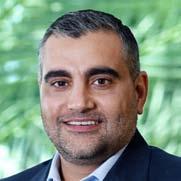
IFS has been supporting customers such as BW Energy, Borr Drilling, SBM Offshore, ARO Drilling, Kodiak Gas Services and many other oil and gas customers across the globe to accelerate digital transformation and sustain growth.
These solutions support mission-critical business processes including enterprise asset management, maintenance, onshore-offshore data replication, supply chain management, human capital management, financials, document management, etc, which simplifies work processes
One of the main findings from the research is that in the energy and utilities sectors, companies want to use enterprise software systems such as enterprise asset management, enterprise resource planning and mobile workforce management to achieve tighter integration and collaboration across different functions.
Respondents from the energy, oil and gas sectors also say that all emerging innovative technologies are important to their digital transformation strategy. Almost three quarters 74% of respondents from the energy, oil and gas sector said augmented reality is important for their digital transformation strategy, whereas just over 3 in 5, 62% respondents from the utilities sector said the same.
IFS works closely with
74% of respondents from the energy, oil and gas sector said augmented reality is important for their digital transformation strategy, whereas 62% respondents from the utilities sector said the same.
the energy, oil and gas sectors to understand and provide solutions that help in driving operational efficiencies. Embracing the use of technology to inform and support decision making enables organisations to achieve operational excellence. IFS software supports all the business-critical processes that facilitate an energy organisation to digitally transform their operations across different assets to deliver business value in an evolving market.
IFS is participating in ADIPEC 2022. The company is showcasing its latest innovations and is demonstrating how it helps energy companies optimise assets and gain better control of projects globally as they chart out new paths through diversification. n
Petrofac implemented Oracle ERP Cloud for its Asset Solutions business unit with deployment underway for the company’s Engineering and Construction business unit.

Petrofac, a global energy services provider, needed to automate and streamline key business processes across verticals, manage resources more effectively, and better align the business behind its expansion plans. Petrofac implemented Oracle Fusion Cloud Applications Suite to enhance operations and support the company’s ongoing expansion.
l The energy sector is experiencing change at a rapid pace as advancements in technology pave the way for the future of clean energy.
The energy sector is experiencing change at a rapid pace as advancements in technology pave the way for the future of clean energy.
Oracle Fusion Cloud Enterprise Resource Planning, Oracle Fusion Cloud Enterprise Management Planning, and Oracle Fusion Cloud Human Capital Management, will help Petrofac integrate core business processes across its global operations, generate realtime insights, and better support its growing workforce.
Oracle Fusion Applications gives real-time access to critical data, enabling increase in efficiency increase, reducing risk, building a resilient supply chain, and improving employee experience. Petrofac implemented Oracle ERP Cloud for its Asset Solutions business unit with deployment underway for the company’s Engineering and Construction business unit.
With Oracle Fusion Applications, Petrofac can connect operational data across HR, sales, finance, and procurement functions to improve management insights, accelerate decision-making, and

With Oracle Fusion Applications, Petrofac can connect operational data across HR, sales, finance, and procurement functions to improve management insights, accelerate decision-making, and realize a faster time to value. Moving business processes to Oracle Fusion Applications will also help the company eliminate manual processes, enhance supplier communications, boost transparency, and create a single user experience and data model.
realize a faster time to value. Moving business processes to Oracle Fusion Applications will also help the company eliminate manual processes, enhance supplier communications, boost transparency, and create a single user experience and data model.
The Oracle Fusion Applications implementation with Petrofac is being managed by Oracle Consulting.
With offices in 29 countries, Petrofac’s portfolio spans design, construction, maintenance and optimisation of oil, gas, petrochemical, new and renewable energy infrastructure. n
Kaspersky’s research has identified seven factors that boost industrial security and organisations operating in oil and gas and energy should prioritise these seven.
Kaspersky’s research identified seven factors that boost the efficacy of industrial security. Organisations operating in the oil and gas, energy industry should prioritise the following:
the oil and gas energy industry’s cybersecurity needs. KICS products are designed to secure the industrial elements of an organisation.
AMIR KANAAN Managing Director, Middle East, Turkey and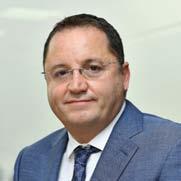
#1 Have a well-resourced and skilled OT security team

#2 Have an IT, OT convergence plan that includes IoT
#3 Have a strategy for managing legacy infrastructure
#4 Have mastered internal politics of industrial security management
#5 Have implemented security solutions designed for industrial environments
#6 Have a quick response when incidents occur
#7 Have staff training and compliance in place
The Kaspersky Industrial Cyber Security, KICS portfolio addresses
l KICS for Nodes is aimed at industrial endpoints, while KICS for Networks monitors industrial network security.
l Kaspersky Security Centre is a centralised security management solution that orchestrates the security of the entire operational technology, OT infrastructure.
l Kaspersky’s suite of services is also an essential component of the KICS portfolio.
KEY TAKEAWAYS
40% of oil and gas, chemicals, energy organisations experienced a significant number of incidents, 20 or more during the previous year
According to the recent Kaspersky ICS Security Survey 2022, 40% of oil and gas, chemicals, and energy organisations experienced a significant number of incidents, 20 or more during the previous year.
From Industrial Cybersecurity Assessment and Threat Intelligence to training programmes for employees and security experts, Kaspersky provides a full range of security services. n
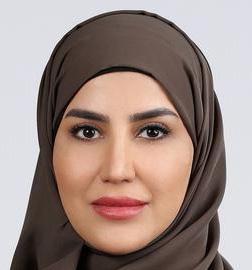
Mashreq announced appointment of Hamda Al Shamali in the newly created role of Chief People and Intellectual Capital Officer. In this role, Hamda will bring her significant human capital and talent development expertise to lead and grow human resources, nurture and develop Mashreq talent, and support culture and engagement enhancement programmes across the organization.
She will be responsible for leading key priorities such as diversity, equity and inclusion, streamlining distributed workforce and hybrid working models, automation of EX journeys and evolving employee wellbeing discipline into the broader and more comprehensive organizational health approach.
Hamda is a seasoned senior Emirati human resources professional with a strong track record spanning more than 20 years of accomplishments with leading local and international organizations. Hamda holds a bachelor’s degree of Applied Science in Business Administration from Higher Colleges of Technology Dubai.
Real estate advisor Savills Middle East has made two key appointments to lead its property and facilities management functions in the Kingdom of Saudi Arabia. Laszlo Fulop joins as Head of Property Management and will oversee the department in Saudi Arabia, ensuring stability and consistency of the service for landlords and tenants. He will deliver value through innovative concepts and implementation of best practices in multiple areas including tenant relationship management, policies and processes, EHS/ESG, cost management, and commercial lease negotiations.
Laszlo brings over 20 years of experience in managing and leasing properties across multiple asset classes as well as providing consultancy services to developers and occupiers. Prior to joining Savills, he was Head of Property Management at Budapest Airport where he oversaw the management of a portfolio of 80 assets across office, retail, and industrial sectors led to over 120 tenants.

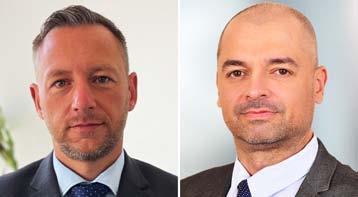
Bain & Company announced, two new Partners, Karen Khalaf and Elif Koc, in the Private Equity and Sovereign Wealth Fund practice in the Middle East. Karen and Elif will leverage their vast experience to support the further growth of Bain’s investmentrelated work across several sectors in the region.
Having worked with Bain across the Middle East and North America for over 10 years, Karen started with Bain & Company as an Associate Consultant in 2013 and has supported leading financial investors across geographies throughout her journey at the firm.
Bain has also added Elif Koc to its Middle East team. Elif joins with over 15 years of experience leading work with financial investors with a particular focus on the technology, consumer products, and retail sectors, across the full transaction cycle with an emphasis on long-term value creation and embedding stakeholder returns to investment decisions. Her main areas of expertise include buy-side and sell-side transaction strategy for trade and IPO, post-merger integration, post-acquisition value creation, portfolio planning, investment,
and divestment strategies, and organic growth strategies. Benjamin Blackaby, Laszlo Fulop join Savills Saudi Arabia to lead property, facilities management (Left to right) Benjamin Blackaby, Head of Facilities Management, Savills and Laszlo Fulop, Head of Property Management, Savills.By 2030, between 50 million and 70 million tons of plastics will be recycled annually, well below the global targets set by companies and governments.
As attention has focused on the problem of plastic pollution in the environment, governments and the private sector have taken steps to promote recycling and reduce plastic waste. These measures include phasing out certain single-use plastics and setting specific goals on plastics recycling. Targets vary by region. But countries in the Middle East are taking significant action towards reducing plastic consumption. For example, in the United Arab Emirates, the government has banned single-use plastic bags to encourage utilizing reusable products.
In the region’s private sector, companies that make and use plastics are making new commitments to expand the use of recycled and bio-based plastics, reducing the amount of plastic used, and increasing recycling through better design and new investments in infrastructure. There are also many new recycling initiatives and partnerships, along with innovations in new plastic types such as low-carbon plastics made from biomaterials.
Industry users understand that more needs to be done to improve the sustainability and circularity of plastic products, that is, the ability to put materials back into the supply chain, rather than depositing them as waste. In many cases, improving plastic circularity will also reduce emissions, making it essential for delivering on the industry’s decarbonization goals and ensuring the license to operate among growing concerns about plastic waste.
Plastic producers and users know that if concerns are not addressed, they risk facing more stringent regulation and more pressure from customers.
There is a lot of activity underway on recycling
and circularity, but it is still not enough to provide the amount of recycled material that the industry will need. Recycling scenarios, based on current industry efforts and trajectories, suggest that by 2030, between 50 million and 70 million metric tons of plastics will be recycled annually, or 10% to 14% of total plastic consumption, well below the global targets set by companies and governments.
This misalignment between what companies want to buy and what will be available could inflate prices for recycled plastics, as competition heats up for the limited supply. Also, as the feedstock required for producing recycled plastics becomes bottlenecked, plastics producers will need to secure supplies to remain competitive as the market scales. These dynamics add to the uncertainty of the prospects for recycled plastics growth and will hinder investment.
We are seeing three types of actions aimed at accelerating the momentum behind plastics recycling.
One reason that recycling rates are so low is that the technologies involved are not welldeveloped. Recycling rates are higher in categories where technology, infrastructure, and public and consumer engagement are more mature. Scaling up recycling also comes with challenges, though, as it gets increasingly difficult and costly to increase collection rates while also capturing smaller and less-efficient volumes of used plastic.
Most plastic recycling today is mechanical processing the material but keeping the molecule intact. Chemical processing, changing the chemical structure of polymeric waste, can recycle more plastic. But chemical recycling remains mostly at R&D levels 1 kiloton or less or pilotprogram scale 10 to 30 kilotons, focused mostly on
l More needs to be done to improve circularity of plastic products, that is, ability to put materials back into the supply chain, rather than depositing them as waste.
l One reason that recycling rates are so low is that the technologies involved are not well-developed.
l Sustainable solutions will require partnerships that ensure steady supply of renewable materials and a market for recycled materials.
l Plastic producers, recyclers, and consumers will need to work together to build support for change.
l The misalignment between what companies want to buy and what will be available could inflate prices for recycled plastics.
l As feedstock required for producing recycled plastics becomes bottlenecked, plastics producers will need to secure supplies to remain competitive.
l These dynamics add to the uncertainty of the prospects for recycled plastics growth and will hinder investment.
polyolefins.
Pilots help overcome technical challenges, demonstrate scalability and commercial viability, and provide experience that improves process stability and yield. These efforts are expected to scale to commercial levels over the next five years.
Recycling advances aren’t limited to technology, but also extend to collection, sorting, and processing to improve the quality of waste streams—a necessary step to boost recycling rates. Some companies are building up these capabilities. Several material innovations have also been pushed by resin producers to improve circularity, which is now being adopted by plastic converters.
Partnerships and new business models
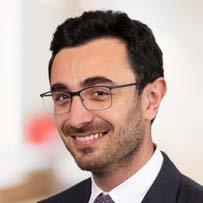
Scale, sustainable solutions will require partnerships that ensure a steady supply of renewable materials and a market for recycled materials. Supply chain partnerships can help ensure a consistent flow of renewable inputs, which is essential to develop a market. These partnerships need to extend beyond the local initiatives that have emerged in some regions. Plastic users are also forming partnerships.
Offtake agreements are critical to ensure demand for recycled materials as production scales up. These agreements, which ensure delivery of the recycled materials produced, give producers a runway to gain experience, become more efficient, and reduce costs. Typically early offtake agreements are with customers willing to pay a premium for better ESG performance, whether because of individual commitments or local regulations.
Legislation and standards
Plastic producers, recyclers, and consumers will need to work together to build support for change. They will need to develop better policies for collecting and managing plastic waste, supported by better consumer education and behaviour on waste sorting. They will need to encourage investments and funding for new technologies. They will need to agree on taxonomy as well as standards.
Support is also developing around the world. In March 2022, the UN agreed to develop a treaty designed to end plastic pollution. Details are still to be ironed out, but the specific resolution is likely to address the full life cycle of plastic, including production, design, and disposal.
The outcome, with internationally binding commitments, could be an important step in creating a global environment with investments channelled toward building up recycling infrastructure. Companies and associations, such as the International Council of Chemical Associations, have endorsed the treaty as an important step to address plastic pollution.
Although current efforts are not yet at the scale required, plastics recycling, the use of recycled content, and the use of low-carbon plastics are sure to increase. Companies that prepare now to scale up, connect to high-quality waste streams, and ensure a long-term supply of feedstock can put themselves in a stronger position in sustainable plastics. n
The journey must begin with the notion of transformation – who is implicated, what the company is able to achieve, and where it wants to get to.
Just like a word that has been repeated over and over, digital transformation as a phrase has been so oft-mentioned that it has almost lost meaning. Sadly, in terms of its application, it’s true meaning has also been lost. At its heart digital transformation is, simply, the strategic adoption of digital technologies. It serves as a guided roadmap to improve processes and productivity, to deliver better customer experiences, to make employees’ work lives more fulfilled and efficient, to eliminate business risk more effectively, to control costs, and to eliminate waste as part of broader
sustainability efforts. Encompassing an everevolving and expanding range of tools, solutions and innovative processes, digital transformation is supposed to be the blueprint for how new technologies can uplift organisations.
So why then, amid this seemingly clear mission statement, was $900 billion of the $1.3 trillion spent on digital transformation efforts in 2021, wasted?
This is the estimated extent of businesses failing to embark on successful digital transformation journeys,
largely due to the fact that they perceive digital as a natural precursor to transformation. Effectively deploying a build it and they will come ethos when it comes to the newest, shiniest innovations has left many scratching their heads as to why these silver bullets have missed the target.
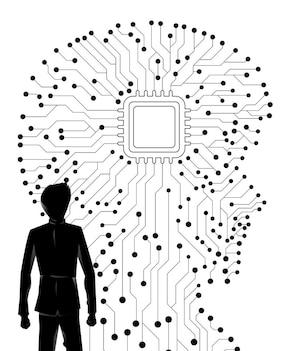
And, in a lot of cases, actually reduced efficiencies, created more business risk, and alienated workforces; despite being promised the exact opposite effects. Forbes recently went as far as to call digital transformation an empty catchphrase such has been the extent of its misunderstanding and misapplication.
But where exactly are companies going so wrong?
A recent survey sponsored by SADA Systems pinpoints a large part of the problem. More than half of the IT executives asked 56% confirmed that their organisations had already spent more than $1 million on digital transformation, but only 18% confirmed that the money had been allocated to change management.
This is a critical stat as it confirms what many thought leadership arbiters have mused over the past two years. Companies are not identifying areas for change and plotting a digital route to achieve this positive transition. They are throwing
l At its heart digital transformation is, simply the strategic adoption of digital technologies.

l So why then was $900 billion of the $1.3 trillion spent on digital transformation efforts in 2021, wasted?
l More than half of the IT executives confirmed their organisations had already spent more than $1 million on digital transformation.
l Only 18% confirmed that the money had been allocated to change management.
l Digital transformation is not just about introducing the latest technology to paper over cracks.
l AI, machine learning, IoT, cloud migrations, need guidance and they need a reason.
new innovations into the mix as an opening gambit, in the hope that change is a natural, and immediate, biproduct.
This is not even to say that businesses are unaware of what a successful digital transformation can yield. Most do cite aspects of data capture and use, connectivity of departments through tech, heightened communication, greater efficiencies and a better customer proposition as organisational goals. They are simply not putting in place the foundations for their investments to align with these metrics. What seems to have been overlooked or forgotten is that digital transformation is not just about introducing the latest technology to paper over cracks. These solutions – think, AI, machine learning, IoT, cloud migrations – need guidance; they need expertise, and they need a reason.
That reason derives from a culture, a structure and a clear roadmap that starts with what the company’s current capabilities are, what it’s end objectives are, and what the most suitable suite of technologies are to transform between those two stages.
Perhaps most alarmingly from SADA Systems’ survey, it was reported that 27% did not even want to make a transition in the first place. One in four were so unexposed or unaware of how exactly their organisation’s current status could be uplifted by a change project, that they would rather not do so at all.
This speaks volumes for the lack of training, communication and culture that is currently being built into the overall digital transformation process. At present, what employees are being presented, seemingly without warning, is a new digital
infrastructure that has arrived without explanation, coaching or rationale. It is not difficult to see why people become disillusioned with the transition and may even become concerned that these new systems are there to replace them, rather than augment their performances.
By approaching these projects from the inside first, this can all be undone relatively smoothly. The current landscape of the organisation has to not only inform future steps, but it has to be a tangible, opening part of the process – to analyse gaps and issues, to gain employee feedback and seek their input, and to invite outside expertise to deliver clear messages to all involved.
And, vitally, that communication cannot just stop once initial conversations have taken place. A digital transformation exercise may comprise numerous phases which seem like end goals, but in reality, it will be a neverending exercise epitomised by the culture fostered within the business. Continuous training, dialogue and cross-department communication have to be the norm in order for everyone to be singing from the same hymn sheet and bought into the changes ahead.
When implemented correctly, digital transformation provides an opportunity for organisations to fundamentally change the way they operate, so they can better serve customers, grow faster, encourage employee retention, increase profits and to become more sustainable.
Rather than this journey beginning with the digital, it must begin with the overarching notion of transformation – who is implicated, what the company is able to achieve, and where it wants to get to in the future. n



Luxury Italian carmaker, Automobili Pininfarina has appointed Nine Motors as its official retail partner in Saudi Arabia. Nine Motors will be responsible for the sales and service of Automobili Pininfarina’s awardwinning Battista. The pure-electric hyper GT is making its first visit to the region in November for clients to experience first-hand.
The pure-electric Battista hyper GT, the most powerful Italian car ever made, is crafted over more than 1,250 hours per piece in Cambiano, northern Italy. No more than 150 examples of the Battista will be commissioned and handcrafted for customers worldwide. With a total of 128 million interior combinations alone, the new hyper GT promises new levels of tailoring, and Nine Motors will assist clients as they personalise the Battista to suit their individual taste.
Saudi Arabia is one of the most important markets in Automobili Pininfarina’s retailer network strategy and is a country fast adopting a sustainable future thanks to its Vision 2030 strategy.
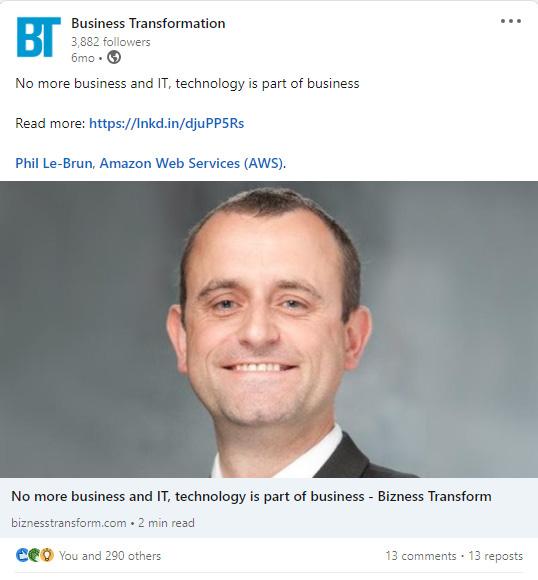
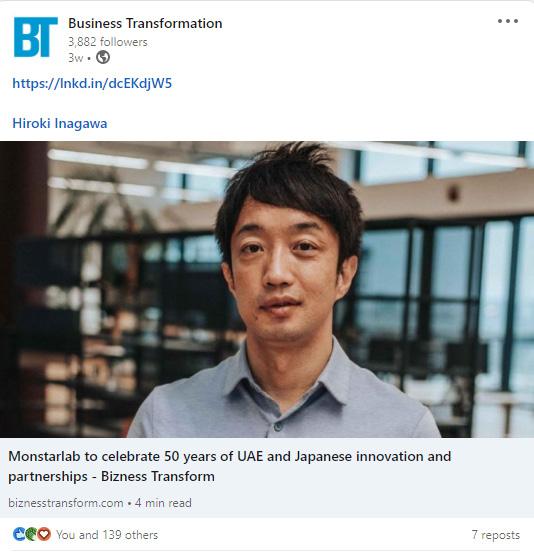
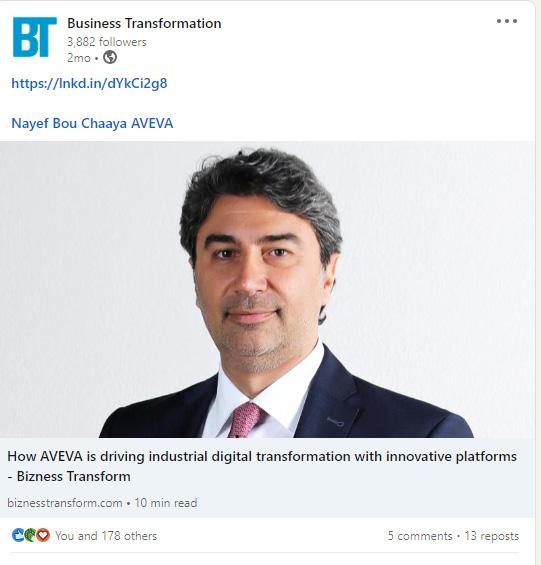
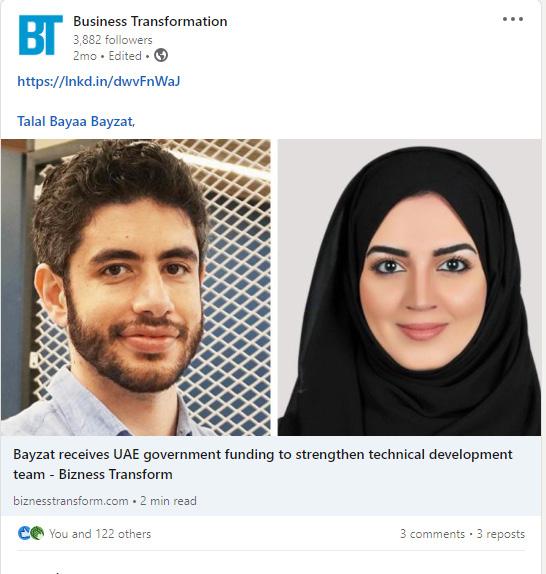
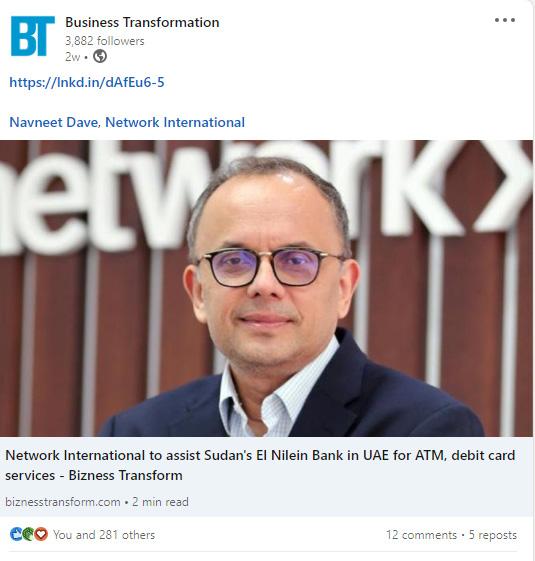
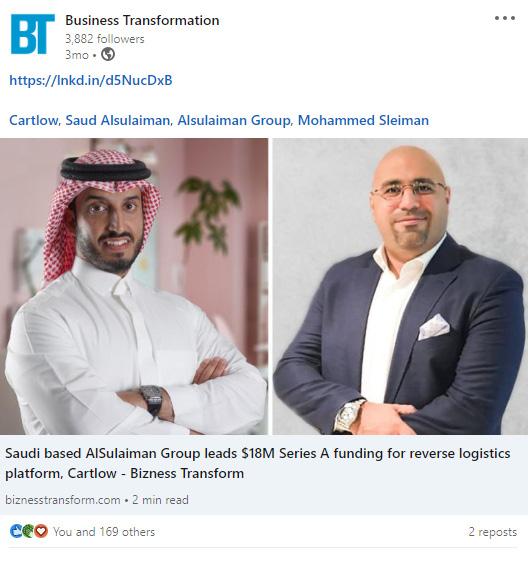
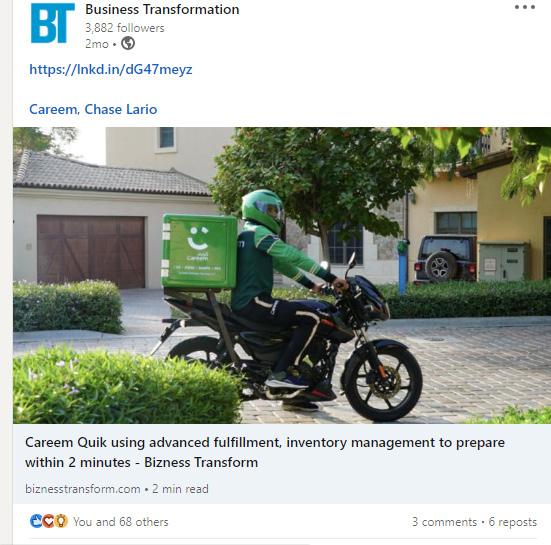
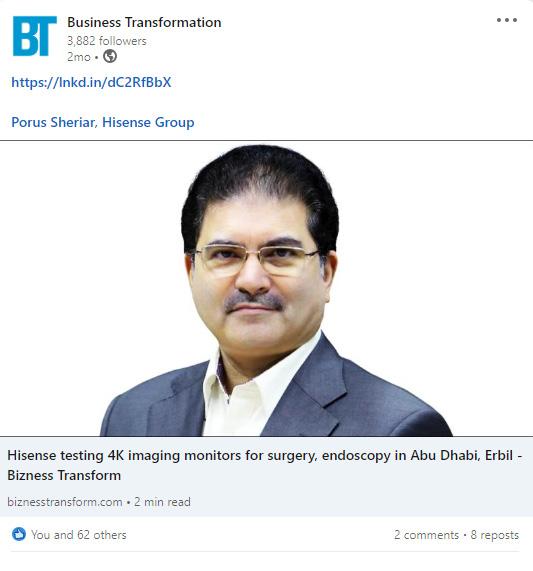
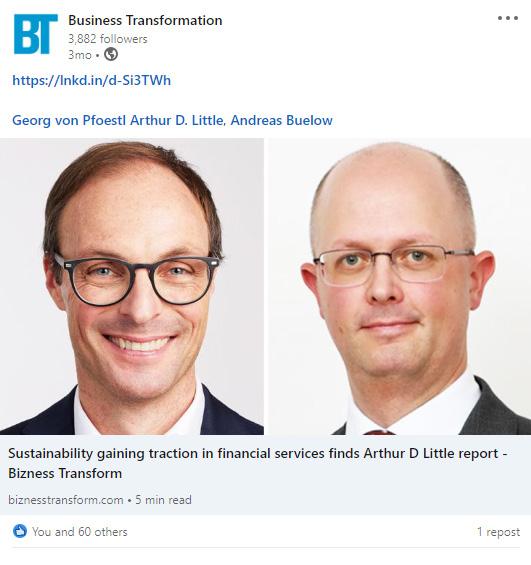
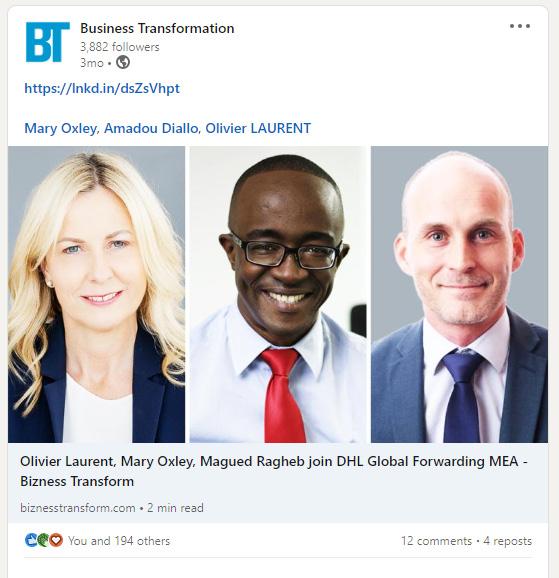
AUGUST-NOVEMBER 2022
22-24 NOV 2022
HOLIDAY INN
BANGKOK SILMON HOTEL - IHG
WHERE TECHNOLOGY IS BORDERLESS, AMBITIONS ARE FEARLESS, AND LEADERSHIP IS LIMITLESS
